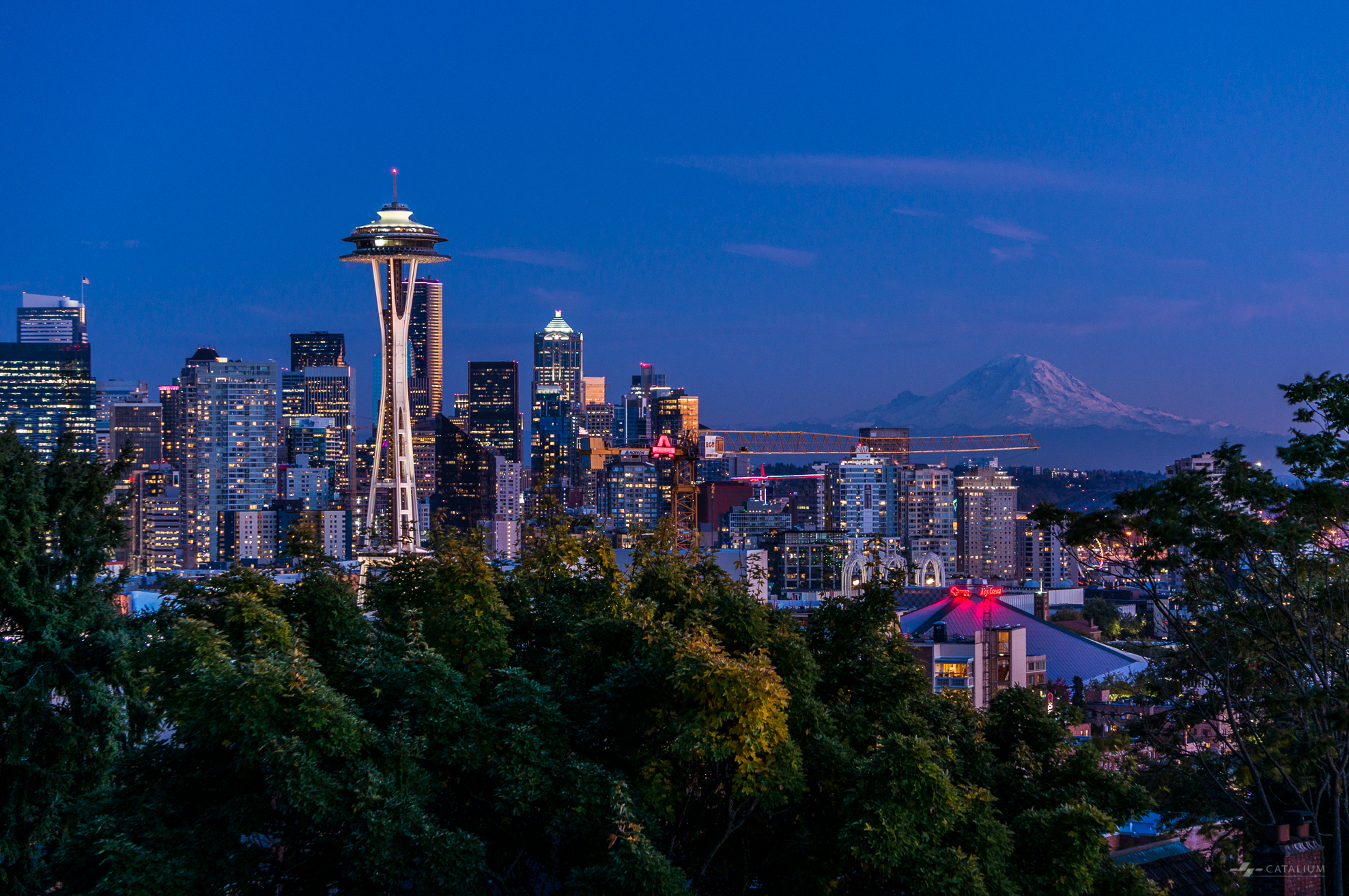
This blog was originally written by Ryan Wu in Chinese on Dec 28, 2017: https://catalium.net/my_2017-cn/
In August 2017, I resigned from my post in Beijing as a product manager. Later, I came to the States to pursue the master degree. It was a solid year, it deserves a good summary. I’m writing the rewind at my apartment in Bellevue, WA. “Once recall the days in my secondary school time in China, then look at our living experience here in the US, it seems to be another lifetime,” said my friend who works at Microsoft HQ in Redmond.
The summary for 2016 was not written due to some reasons, but as the last two years were highly twisted and critical for me, I’ll cover 2016 in this 2017 summary.
2016
2016 was extraordinarily substantial for me, in this year:
- I launched the product which I had worked on for 6 months, then iterated the product for 8 versions;
- I learned how to drive, and rolled the wheels for more than 1,000 km;
- I figured out my status and decided to study in the US.
The Job
Continued my work in 2015, the first priority for the beginning of 2016 was to develop the Niu App and have it launched. When I joined the team, the then online 1.x version could no longer satisfy the users and the company. And the back-end required a lot of work to be done. I conducted some internal investigations and researches, clarified the target for the upgrade, wrote the requirement specifications and coordinated with sales, after-sales, development teams to confirm the PRDs. I worked with leaders and the outsource company to schedule the agenda. In February 2016, the front-end of the App had been finished, but there were still design and development issues unsolved. The company planned to package the launch of the App 2.0 with the debut of the new scooter type M1 in April.
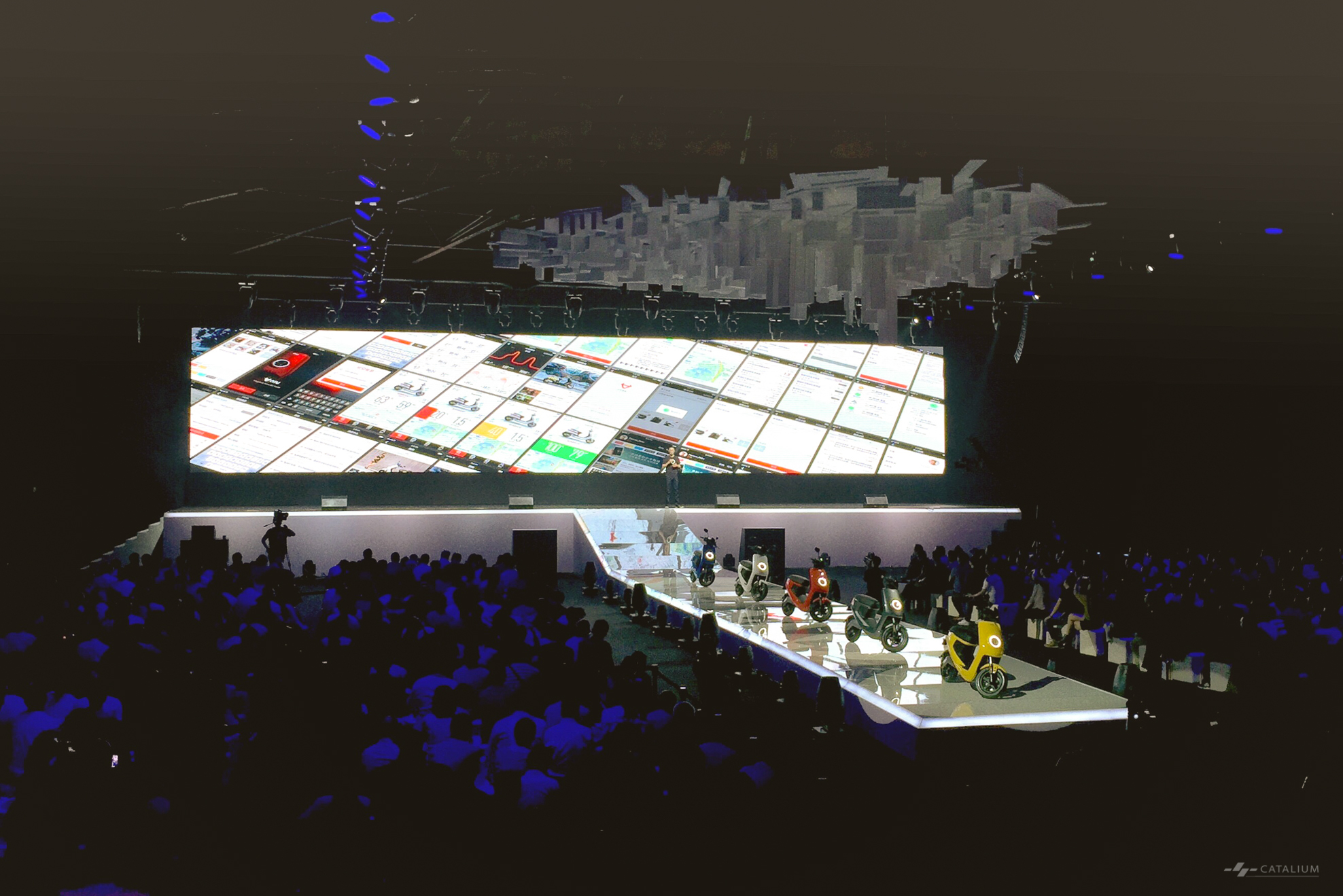
On April 21st, the App released on time. But the validation errors derailed the App. Other unprecedented problems in the simulation tests popped up one after another. In the following half year, 80% of my time was spent dealing with customer complaints, analyzing the causes, and working with fellows to solve the problems. Merely did I work on fixing design defect and conceiving new functions.
Niu pays close attention to the quality. Being different from other hardware products, vehicles like e-scooters could work in thousands of various situations. Our users scattered widely in the nation, from cold to hot, from urban to rural, the complexity brought in significant challenges for both mechanic and electronic components, and it further cast a shadow on our smart services. For instance, the cornerstone of the App was the data sent to the cloud from the ECU, and these data could be turbulent due to environmental or engineering disturbance, and the turbulent data would directly jeopardize the App functionalities. Strange things like a single ride consumed 126% of the battery, or a fully charged battery had an estimated available range of 2 km could happen. At Niu, there were company-wide Quality Control Meetings held weekly, and on each day, there would be Customer Complaint Statement available internally. The App I was charging had more than one hundred issues at the very beginning. My boss questioned me about the situation, it was pretty shameful. In the rest of the year, I worked with cross-function colleagues to settle down defects gradually. At the end of 2016, we had been able to offer stable and reliable App services to the Niu scooter riders in the domestic market.
Previously, I worked at EICO to offer UX consulting services to client firms, at Niu, my role shifted to the contrary side. I was responsible for the design, development and the final launch of the product, acted as the product manager, interaction designer, copywriter, and half of a visual designer, simultaneously, I fully engaged in the full workflow of shipping a product. From ideation to delivery, the design was just a link to the whole picture. Most of my energy was in testing and development coordination, in the later phase, the daily operational job also consumed me a lot. After going through this, I genuinely felt the hardship of operating a real-world product. And this was the first time ever, I realized when you enjoy the convenience or pleasure of a product or service, there could be teams of hard-working guys behind the scene. Conceptual design requires good vision, while the real product requires not only forethoughtfulness but also viability, feasibility, and reliability, I enjoy it a lot.
The Life
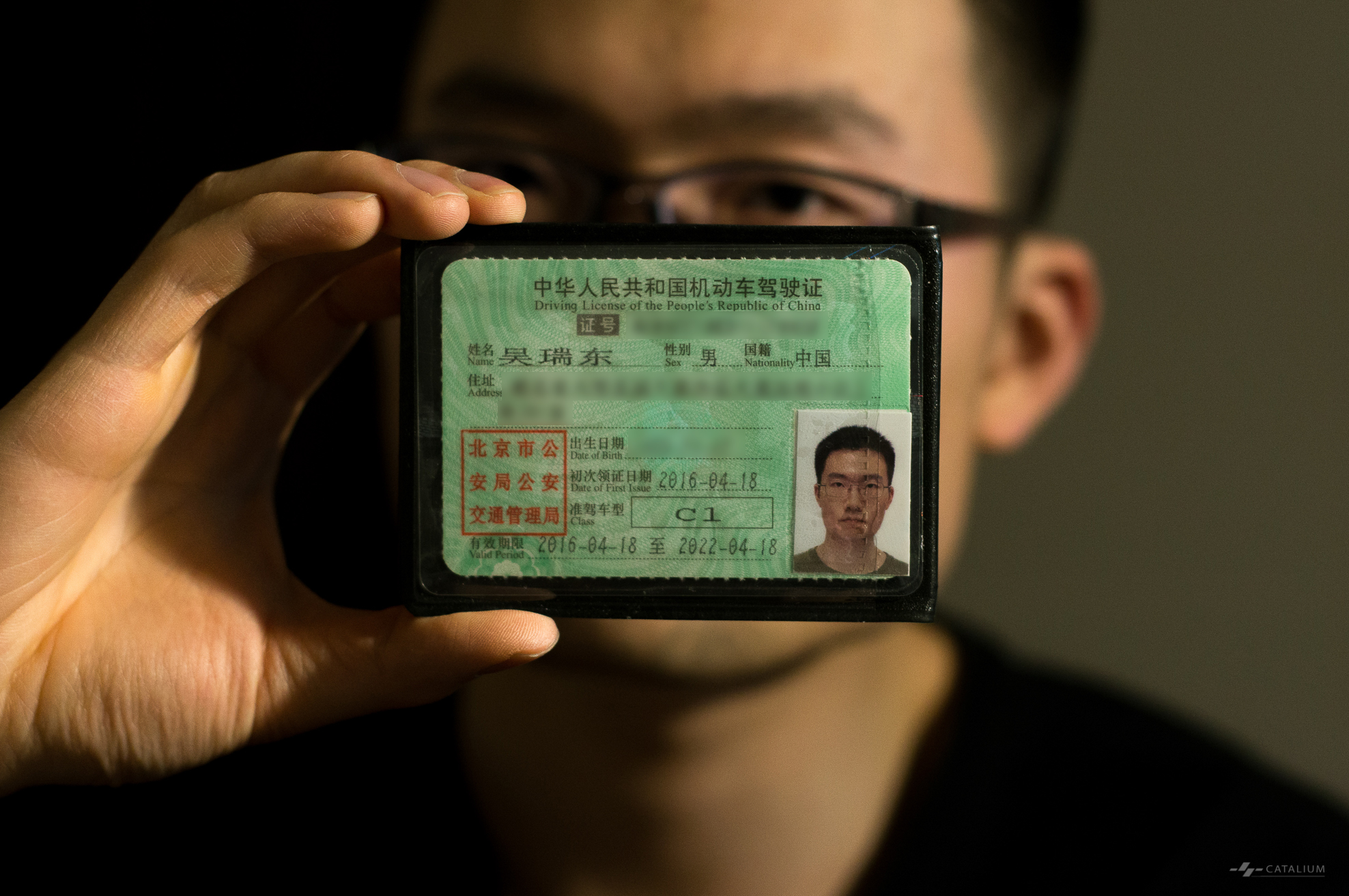
Another memorable thing happened in that Spring was I got my driver license on April 18th.
It was the 2015 business trip in Italy made me aware that I need to learn how to drive. We were working on the EICMA show in Milan, rented a car, but as I couldn’t drive, we lost some flexibility. Meanwhile, Milan was close to the Alps, I could see the enormous range in front of me, wished to have a hike over there, but due to not able to drive, I could not get there, even though I had a car in reach.
I signed up at a driving school in Beijing, took their shuttle bus to the campus in Daxing district at every weekends’ noon, got the license in hand in less than two months — the fastest pace allowed by the law. The exciting feeling reminded me of the day I learned how to ride a bicycle. The consulting experience on the EVCard case when I was in EICO familiarized me with the by-minute car rental business. I registered on all mainstream car rental platforms available in Beijing and had driven more than 1,000 km with those services. The community I lived in had two car rental parking lots, I could reserve a car at most of the time, the experience was somehow equivalent to being a car owner.
Thinking About the Future
In the meantime, I started to think about my future. Industrial design was my undergraduate major, which covered mechatronics, manufacturing, styling, and product study. I shifted to design for digital experience after graduation, my knowledge base could handle product design and user experience, but as I started to act as Product Manager (PM) in Niu Technologies, it became stressful to fulfill the job really well. As a PM, I need to have a good understanding of business strategies, requirement from the user, the boundary of the technology, the approach to management; I hadn’t touched the business, technology and management parts. This kind of knowledge structure defect hindered me from performing a better job — without methodology guidance, there was no strategical level planning and positioning, the ideation of the requirement for the product came solely on the basis of “User-Centered Design” concept, this approach lacked vision; I had no technological background, so when I was conceiving features, I kept asking development colleagues the feasibility of the proposals, this not only slowed down the progress, but also let the imagination of my dev fellows restrict the design of the product — if I had sufficient knowledge in tech, while dev fellow temporarily couldn’t do it, I could offer advice on architectural level; without skills in management, the estimation for schedules was not accurate, and the progress sometimes lost control. When I was working with an outsource development company, I kept stringent criteria, and pushed them to re-develop some modules multi-times, which led the time-frame for the contract overdue, our company paid for the extra bill, I still feel regretful until today.
Also, I couldn’t bear the air in Beijing. My body was sensitive to the air quality, the frequent AQI>200 incidents made me suffered from asthma symptoms. One day early in the morning, I choked to awake, feeling stifled (I used a laser particle-matter counter to study the case, found the PM 1.0 index at the gap of the window exceeded 5-figure, this overwhelmed my air purifier, I embedded paper tissues into the gaps to solve the problem). I would cancel outdoor activities if the AQI were too high, it was tricky to arrange a meeting with friends on a clean weekend.
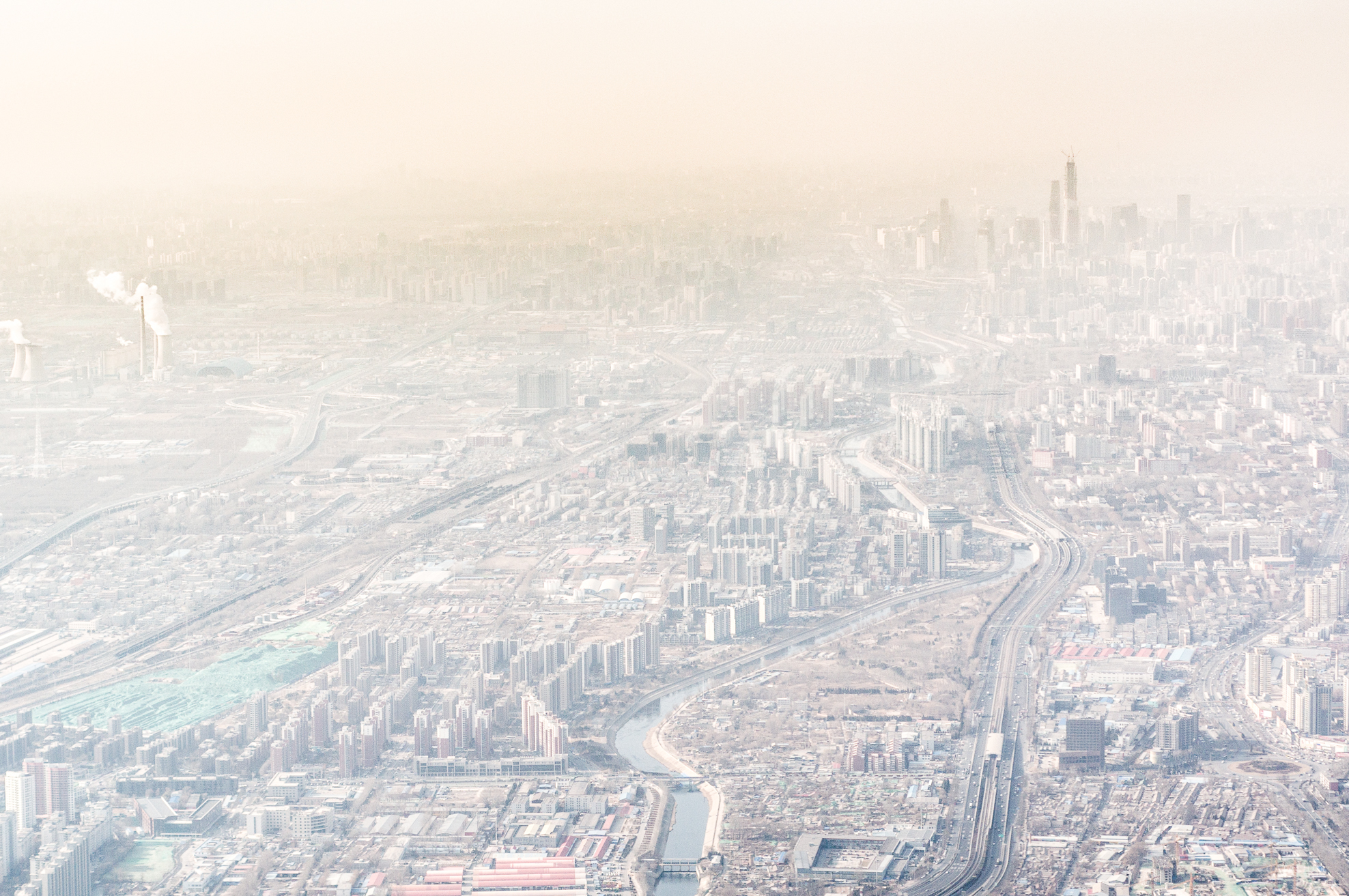
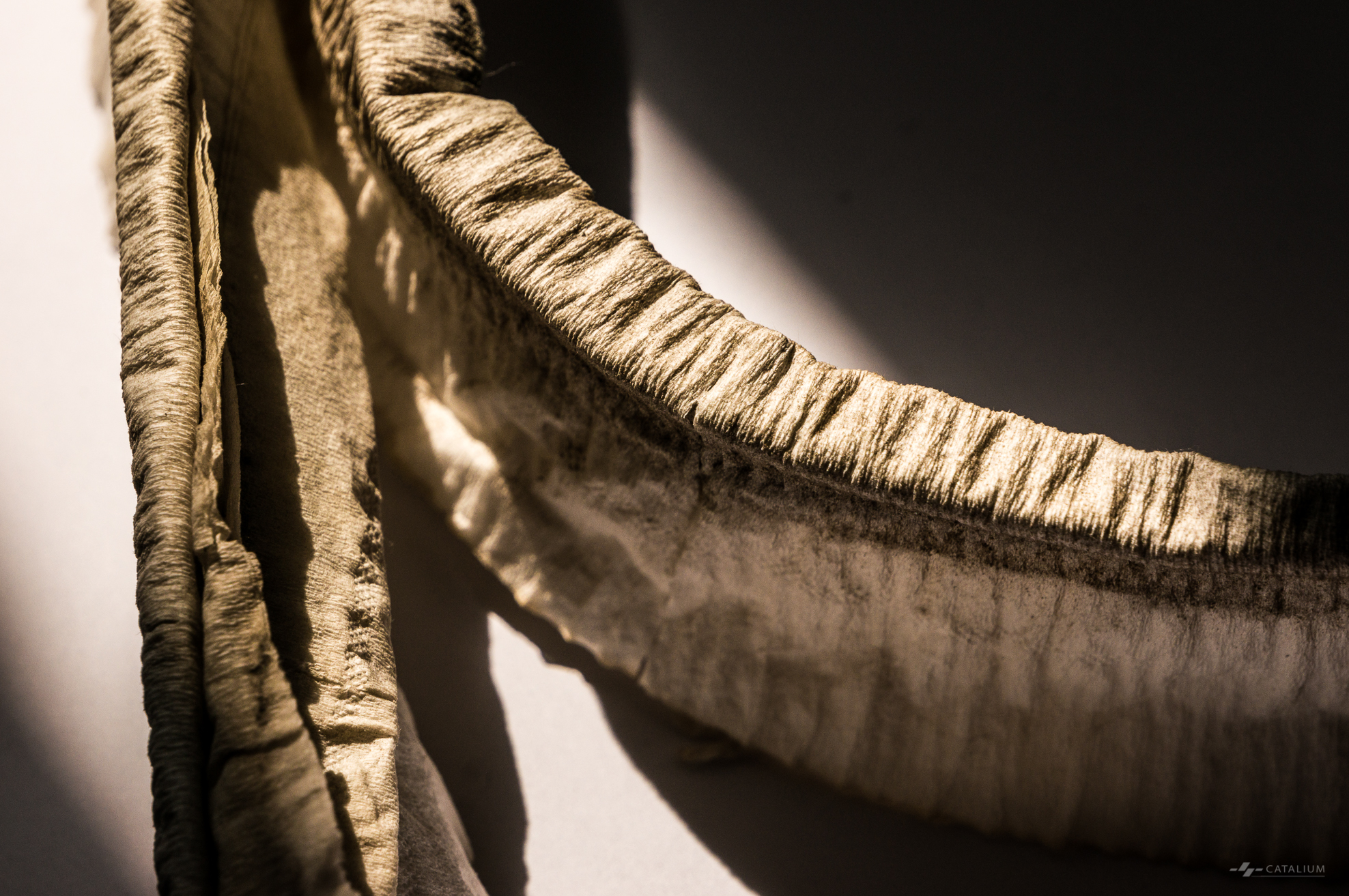
In 2015 when I came to Beijing, the flat I lived in was priced for 3-4 million RMB ($530K), in 2017, it soared to 7-8 million RMB ($1.2M). Which means even if you work at Google HQ for years, the saving cannot cover the amount of increase in flat price during these two years. Considering the household problem and other limitation for me as an outsider of Beijing, it’s not the best place for me to stay. (I had worked in Shanghai for three years, where had similar problems for me.)
So, I considered to have an environment change and go back to the school. The optimal choice was to go graduate school in the US.
The Road of Application – 2016
I ran the application process with a program management approach. Firstly I spent several nights have a quick view of what kind of material needed for the application; then figured out the time budget for each of the documents; and finally made the schedule.
In fact, I was not sure what to learn even in the very last months before the mainstream deadlines. For one thing, I was not familiar with various master programs in different schools, for another, my requirement for the expected program had not been well defined. I majored in Industrial Design, and had a UX work experience, a lot of work had been done in the interaction design field, it would be normal for me to apply for an HCI aspect program. The program listed in my bucket at that time were:
- MHCI, School of Computer Science, Carnegie Mellon University
- MS, Department of Human-Centered Design and Engineering, University of Washington
- MHCID, Department of Human-Centered Design and Engineering, University of Washington
- MS-HCI, Cross-Discipline, Georgia Institute of Technology
- MSI in HCI, Information School, University of Michigan
Another Canadian school (Simon Fraser University) which was influential in HCI was also considered. But I was not reconciled to apply HCI masters after working on it for years. In the meantime, non-MBA programs in business schools and computer science related masters were also considered, but I was aware that my competitiveness and future position would not be plotted on these two charts. This matter was settled down until the very last moment.
The application process for North American schools are generally the same: submit the Transcripts, TOEFL scores (some MIT programs require IELTS), GRE scores (not necessary for some applications), Personal Statement, Referral Letters, and the Portfolio (not required for some programs). Preparing for English exams took me a lot of time. Although I had high scores in English from secondary school to the college time, seriously speaking, my English ability halted to grow after graduating from the high school (almost ten years ago). When I started to practice on TOEFL Practice Online (TPO), I felt enormous pressure — I could not finish the reading section on time. To solve the problem, I formed the habit of reading for more than 20 minutes before going to sleep. I finished books like Steve Jobs, Zero to One, Pour Your Heart Into It, A Brief History of the United States, etc., in this way. The reading habit reinforced my English reading speed and inspired my daily works. So the new habit combined with practicing with TPO helped me take down the reading section in TOEFL. For the GRE, the core of the preparedness was the vocabulary and logic. At the beginning of the preparation, I tested my vocabulary size, it was about 11,000, I tried to take a real GRE test, it was a disaster. To solve the vocabulary problem, I study the words with vocabulary Apps. At first, I tried to review less than a hundred words per day, it was too slow. I followed advice from experiences shared on study forums to boost words per day to near 400. This process looks like machine learning, you don’t need to memorize the word solid as cement by once, recurring the process multiple times every day, the brain will make the memory connections automatically.
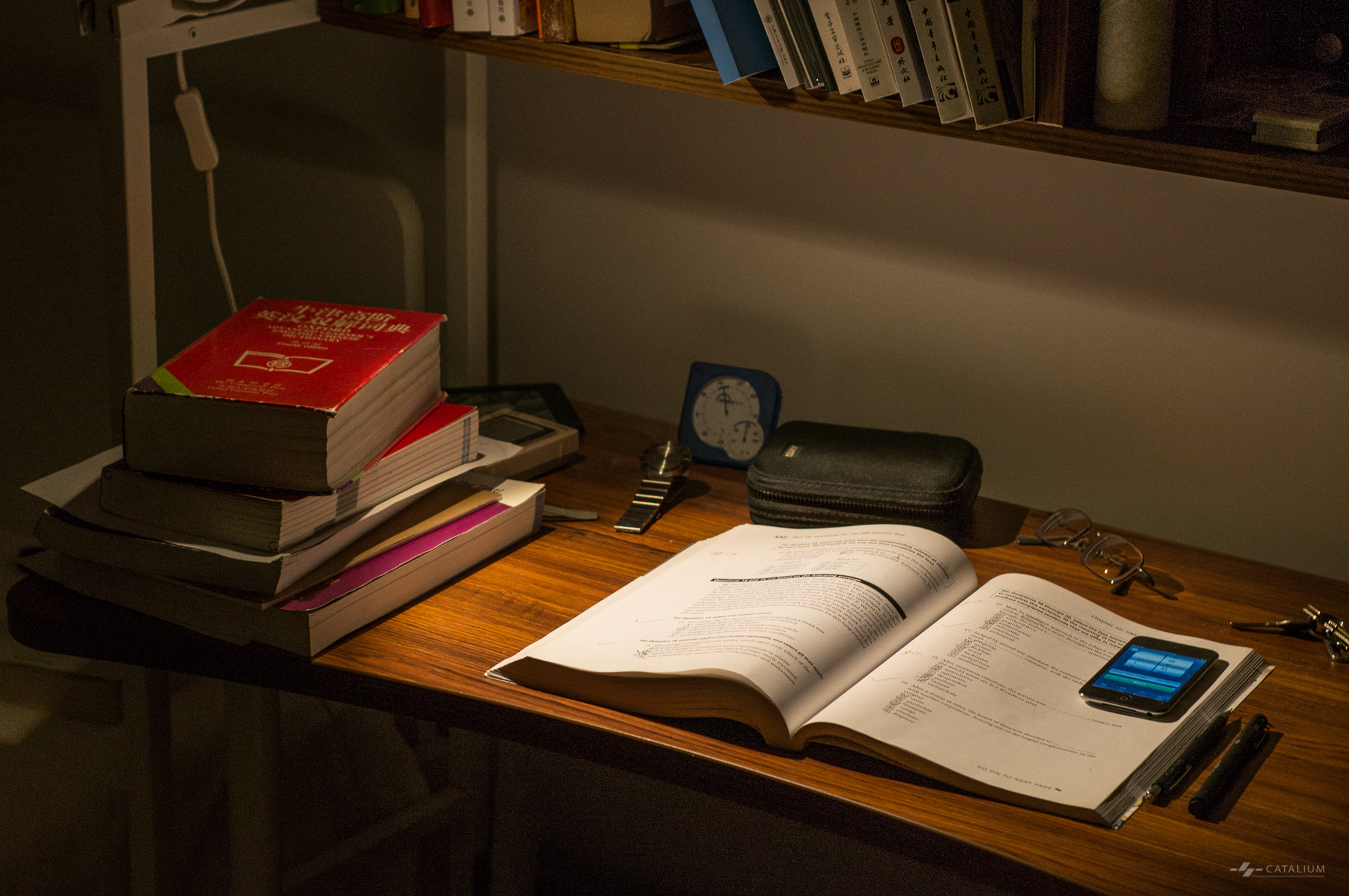
The work in 2016 was pretty heavy. To solve the problem of time shortage, I froze my social life. Got out of the bed at 7:00, learned the words after breakfast, had some exercises on TPO until 9:00, and I was ready to go to work. Every evening after the job, I was able to sit in front of the desk and prepared to start studying by 20:00. Two hours would be enough to finish the reading and listening sections of the TPO, then checked the keys and analyzed the errors of my answer. By 22:30 I was ready to go to bed and have some habit readings. In the later stage of the preparation, my vocabulary had risen to 19,000. My scores for TOEFL’s reading, listening, writing sections were almost in full scores, but due to lack of practicing environment and the extra time it requires to do the practice, I had no special preparation for speaking section, which finally reflected in the score.
Personal Statement (PS) is a critical material to apply for grad school in the western world. I spent three weeks on it (nights/non-business days, so does the following time mentioned). I observed an interesting phenomenon when drafting the PS because I don’t like to say what I am not intended to say, if I’m not interested in one program, I could not even start the draft. On the contrary, I could not stop writing for a preferred application, the headache would be how to control the length. My principle was: tell the real story and the genuine vision.
As an applicant with a product design background, I paid close attention to the quality of the portfolio. I spent three months’ time working on it and went through all the projects I ever participated in the last five years, it was a tremendous amount of summary work. I needed to rewind the details of the projects, and extract the gist from them, then assemble it into a document with natural contexts. During this process, I inspected the past works with a current view, some works sparked for its strokes of a genius, while some others exposed defects. Some of my colleagues’ work was not comprehended fully by me before, but for now, I can understand the considerations and methodologies behind.
Many fellows in full-time work might ask me how could I manage the time to do all these. I would like to thank myself for choosing to live extremely close to the company and thank my company Niu Technologies even more for granting me an engineering version of N1. It would take only 7 minutes to ride the scooter to my office in the morning rush hours (half an hour’s walk, 20-30 minutes for a ride considering the traffic jam), if I left the company very late (say 1:00 AM), when there were so few people and cars on the road, if the traffic lights complies well, I can rush to my apartment in just 3 minutes. While most people working in Beijing & Shanghai spent 2 hours on daily commuting. In somehow, the time I used to prepare was saved by Niu Scooters. Besides, I had no social life this year. For instance, one day my old friend came from Shanghai visited me, after the dinner, he suggested to bring me to his friend in Sanlitun, who was a film director, but as I planned to learn the words, so I just drove him to Sanlitun and left.
One morning in early December 2016, I browsed Instagram as usual, noticed a post from UW’s MHCID program, attributed “We welcome Michael Smith as the new director for #mhcid.” Because MHCID was on my target list, I knew the founding director was Linda Wagner, so I was curious where did Linda go. I searched and found Linda participated in founding a brand new master program at UW called Master of Science in Technology Innovation. After reading the briefing of the program on its website, I jumped from the bed and believed that’s the one.
So, three programs were shortlisted to be the targets:
- MSTI, Global Innovation Exchange, University of Washington
- MHCI, School of Computer Science, Carnegie Mellon University
- MIIPS, Institute of Integrated Innovation, Carnegie Mellon University
2016 ended in the rush of work and study. By the time when the new year came, I was trying to export my portfolio file.
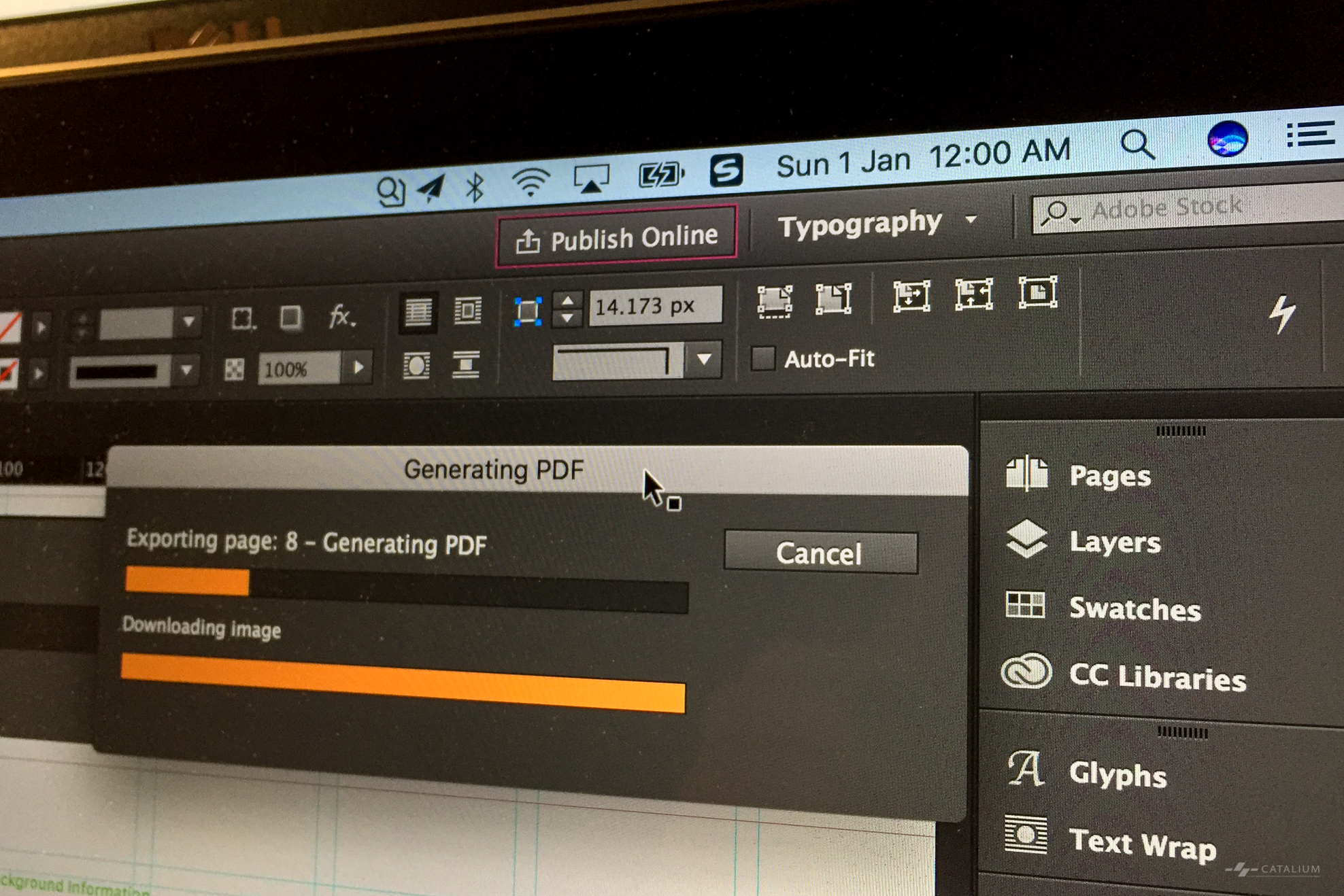
2017
2017 witnessed my great shift, in this year:
- I received the dreamed Admission Offer, came to the US to pursue a graduate degree;
- For the work: I organized the development and launch of the App 3.0 version, had it iterated for 7 times; resolved a crisis; completed the transition work;
- On the life aspect: I learned how to swim; studied the basics of sailing a boat; traveled to Datong in Shanxi Province, and Xi’an in Shaanxi Province; came to the States to start a new life.
The Road of Application – 2017
Among the three master programs mentioned above, two emphasize product development, one focuses more on Human-Computer Interaction. The Master of Science of Technology Innovation at the University of Washington was the first master program offered by the newly established Global Innovation Exchange (GIX). GIX was the outcome of the cooperation among Microsoft, UW, and Tsinghua University. It aimed to nurture the next-generation leaders in innovation by integrating education in technology, business, and design thinking to solve the most difficult challenges the human is facing. While the Master of Integrated Innovation for Products & Services offered by the Institute of Integrated Innovation (III) at Carnegie Mellon University is a well-recognized master program for product development in the States. The Master of Human-Computer Interaction at Carnegie Mellon’s Human-Computer Interaction Institute is the prestigious master program in HCI sector.
In the latter part of the application process, I gradually got the study orientation clearly defined: to know the mainstream and near-future technology in certain depth; to study the method of strategy-making on business and product level; to study and practice the skills for development and team management; to tease methodologies for design. Taking this orientation as the criteria, MSTI fitted me perfectly, then came the MIIPS, MHCI didn’t match my expectation. MSTI of UW, MHCI of CMU received my application at last. MIIPS was taken off my list for its short period of study (9 months), and I didn’t like to work on thesis work for months on the Advance Study track. And their requirement for the portfolio was creepy (extreme document size control, I believe it allowed for just several low-res. pictures). UW had my most expectation while applying for CMU’s MHCI was like some kind of self-challenge.
During the Chinese New Year, I finished all the application processes. I really appreciate my dean at my undergraduate school and the leaders of the companies I ever served in the application material collection period. I am especially grateful for the leader who worked on the referral letter on the Lunar New Year’s Eve and the Lunar New Year’s Day, which were supposed to be for family life exclusively.
At the beginning of March, I received Rejection Letter from the director of CMU HCII (I believe it was due to the score for my TOEFL’s speaking section, my other materials had track code embedded, which showed people at CMU never read them); by far, the MSTI was my last hope. When the day March 15th came, which UW claimed to be the day to send the admission result, nothing happened to my mailbox, I found an Indian student who was applying for the same program, he told me UW replied that there was a technical problem caused the delay. I had a poor sleep that night, wandering in different dreams. The first thing I did on the second day after waking up was to grab my phone to check the mail. The preview of the letter showed “Congratulations on your offer for…“ It felt like a field of tulips had blossomed. Besides being admitted by GIX, I was unexpectedly offered the GIX Fellowship. I’ve heard grad school in America merely provide a scholarship, and I did nothing on the scholarship application, it was a surprise.
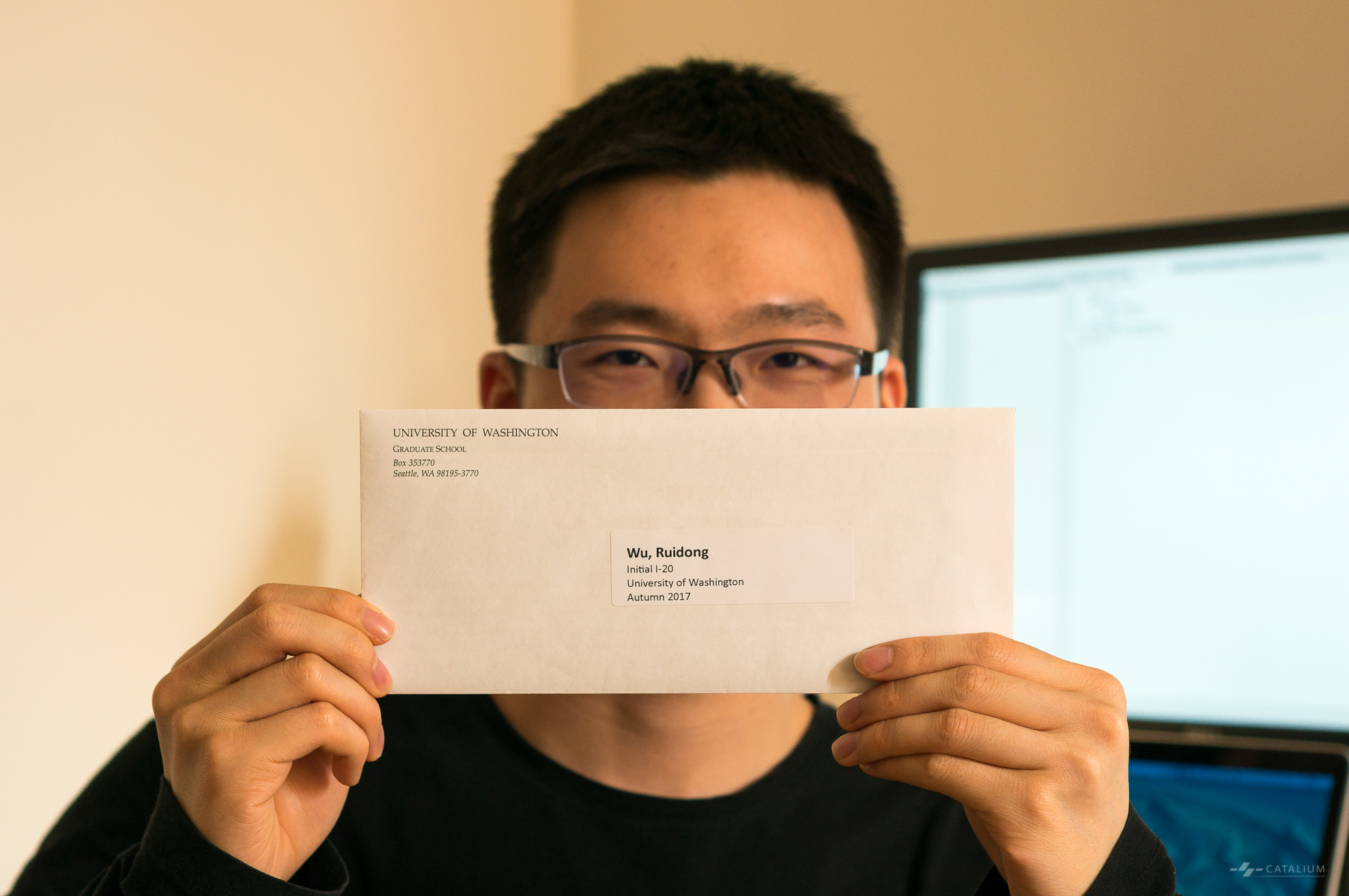
I left this sentence on my WeChat “Moments” timeline later:
I AM GOING TO BE BACK ON MY TRACK AFTER A DECADE!!!
Yes, “Be Back on My Track,” the one who was ever ranked both for the 1st and the last one had come back.
Anecdote: At the beginning of 2017, the Computer Science & Engineering Department received $80mm donation from Paul Allen, the co-founder of Microsoft, and became the School of Paul G. Allen. Then they invited geniuses from CMU, MIT, UC Berkeley and Stanford to the UW CSE. The director who sent me the rejection letter was later reported to be the dean of UW’s i-School from 2018.
The Job
Two projects went in parallel in the first half of 2017: the iteration and evolution of the Niu App 2.X, and the development and launch of the App 3.0. Going through more than 6 months’ optimization and debugging, most of the design and technical pitfalls in the App had been filled, I was able to spare energy to launch new features and make significant modifications to the App. I had been collecting and analyzing feedback from our users from various channels. Meetings inside the App team were organized by me based on these feedbacks to extract new features or improvements to the App, the cost for this workload, and the scheduling of the coming shipping. By that time, the team had been formed for one year, the running-in period had passed, we were yielding at higher productivity. After the launch of 2.0 version, the team had been blamed by the users for a year for the instability of the data source and the server. The 2.6.0 won unanimous positive feedback from our customers, it was a great relief.
The VP of the company invited Ark Design in Shanghai to help design the 3.0 version, in case we “Subject Matter Experts (SME)” who worked with the project for a long time trapped by our thinking set. I participated in some of the discussions on the conceptual design and took charge with the landing and implementation of the conceptual design delivered by Ark, which included tuning the conceptual design, to make it match with the constraints of the users and technology. The experience working with Ark Design feels like a kind of replenishment: when I was working for EICO as a UX designer, I came to clients’ projects like an airborne soldier, helped them figure out the right solution to their problems by conducting user research activities and bringing up concept design. Working with the client to accept services from a consultancy, enabled me to view the value of consultancy business in a new perspective. Macroly speaking, a consultancy can bring in some new inspirations and angles to consider the current business, this works with staggering mature products. However, the client of the consultancy often has accumulated vast knowledge and experience in particular market, the methodology used by consultancies helps them build a general understanding of the framework of the business, but the accumulation of unknowns on the executive level would dampen the implementability of the concept. For instance, the App I worked on called near 200 APIs, the contents, the availability, the stability for each of the APIs have a high impact on the feature called that API, this information are only available for senior staff in the client company.
By the time when the test procedures for the App 3.0 was almost done, and it was expected to be launched, the crisis happened: the Apple development account of the company was disabled.
The result of the disabling was our App Store projects were cleared, the Apps were removed from the App Store, and all of these were not recoverable. The communication with Apple was hard. We contacted them officially, the operator who handled our inquiry answered with ambiguity, had no ability and the intent to help us solve the problem. I wrote the Apple HQ’s appeal email address, nobody replied. We found Apple issued two warning emails, but the emails came to my mailbox was archived automatically, so I was not notified; another colleague who was authorized to received the mail was on vacation, he missed it either. Apple nullified our account without calling. We have no idea why we were banned, even until today. More than 60% of our user was on the iOS platform, the removal of our product from the App Store cast a severe negative impact on our customers. As an emergency response, we decided to organize the development of a Mini Program on the WeChat platform (dominant IM in China, covered a considerable portion of the population). In the meantime, we initialized to register another enterprise Apple Development Account in the name of our branch company in Shanghai. It took only 6 hours to kick-off and finalized the design specifications. The first usable engineering version came online 2 days later. We shipped the Mini Program version of our App to the market with limited resource in a short time. Weeks later, the new dev account was ready, the native App for iOS platform recovered. The reflection on this case was that every key factor of a product should have a clear responsible person. After this case, multiple colleagues were added to the group with higher authority, all emails from any development platform were treated seriously.
In the middle of March, I received the offer from UW, planned to leave the office three months before departing for America (in early September) to visit historical sites in China. But as there was still a lot of work to do, colleagues expected me to finish some of the product requirements before leaving, so I postponed my leaving to two weeks before the plane taking off. In the last few months, despite the operative works, I took charge of the Internationalization work of the App 3.0 version, the architecture of the relationship between the scooters and the users, and defined some of the fundamental features for the following products. In the last two months, I often stayed in the company until mid-night, analyzed the requirements, working on the interaction design specifications, examined the deliverables of the visual designer. Worked in a startup company for two years, I knew all the details and context of the product; working with the colleagues for a long time, we trusted each other, communicated easily, formed a rapport with each other. I cherished and enjoyed that period of time.
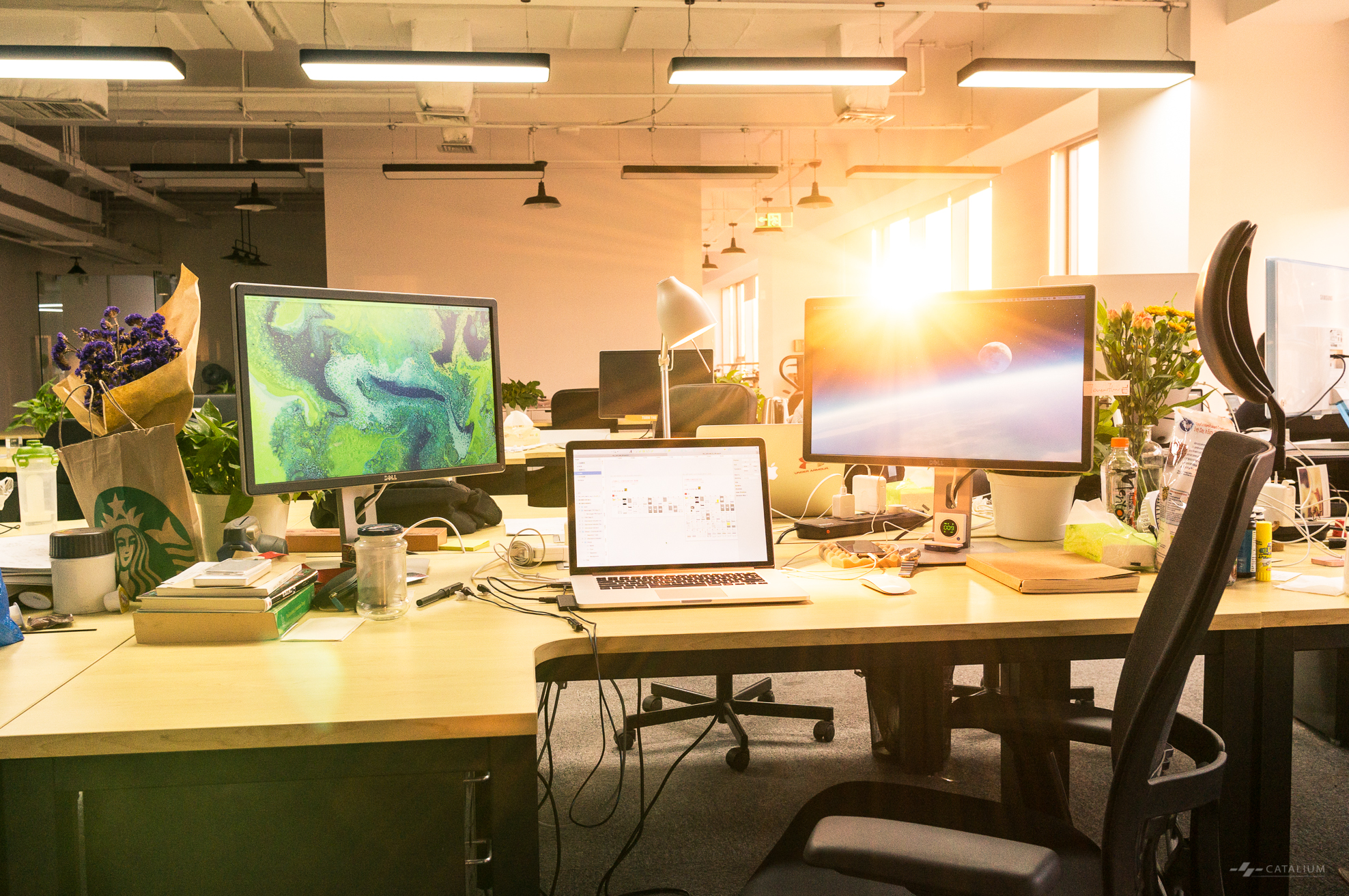
On August 15th, I left the company, wrote the following on my WeChat timeline:
I will leave for my hometown from the West Station on Wednesday at noon. It’s lucky to have made some progress in improving the commuting experience with a cohort of interesting guys. At the very beginning when I rode the engineering scooter on the open street, interested folks surrounded me and inquired its price, but now we have Niu Scooters everywhere in Beijing, we created a new category — the Niu Scooters. It was a rare experience, deeply changed my way of looking at the world. I believe as the team grows, it will deliver more and more high-quality vehicles. As I had said in the recent days, it’s not a matter of electric bicycle or motorcycle, it’s a tide of power shifting in the human history, e-powered motors will replace the internal combustion engines, and Niu will sure be even stronger!
My colleague at Niu sent me a link days ago, it was a documentary trailer named “Innovative China,” one of the episodes was about Niu, I appeared in the trailer for three times. I remember I was holding my colleague’s laptop discussing the product requirements, it’s hard to imagine my only working image was captured in such a way.

The Life
From 2017 on, I require myself to acquire one mental ability and one physical ability every year. The mental ability for 2016 was to enhanced English ability, while the physical ability was driving; for 2017, the mental challenge was programming, the physical was swimming.
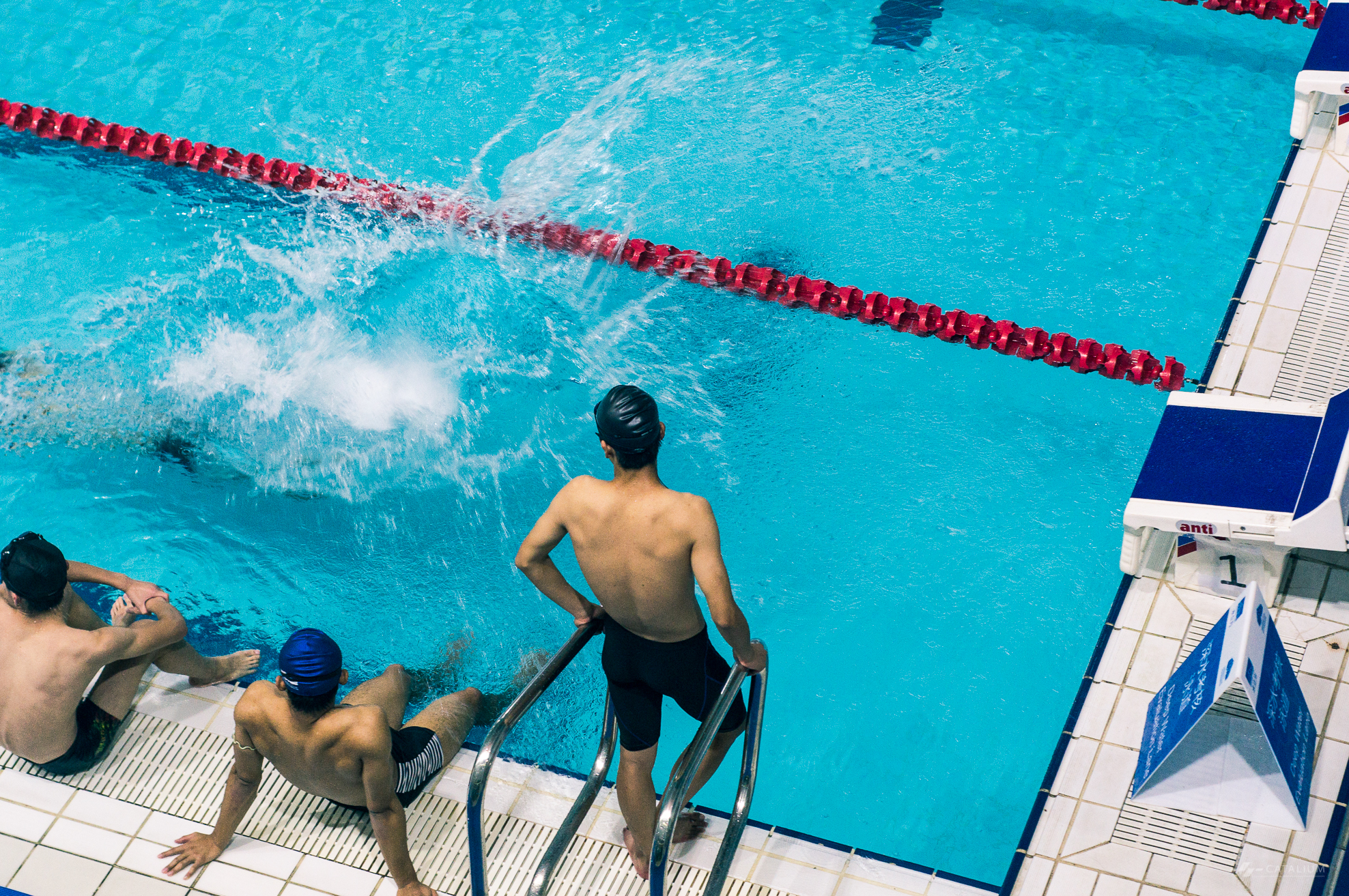
I had been fascinated by aquatic sports, but never got the chance to have a try. In early 2017 I registered the swimming class at the Water Cube, learned the breaststroke from my coach. There was a warm-up pool in the Water Cube’s Henry Fok Pavilion, half of the pool was raised up with structures made of wood plates, 0.8-1.2 m in depth, and 50 m in length, that’s friendly for novice swimmers. In this depth, even if you inhaled water, you can quickly get out of trouble by standing up. The deep pool of the Water Cube required certifications to get in, and they didn’t offer practice authorities for beginners, as I didn’t want to try in other swimming centers, I never knew if I was capable of swimming in deep water. When I came to the swimming pool at UW, there was no separation for “shallow” or “deep” pools — one side of the pool was 4 ft deep, the other was 8 ft, and there was a diving pool in 12 ft deep affiliated to the swimming channels. The first time swam in the UW IMA pool, I was frightened to swim back to the 4 ft side on the half way when I noticed the bottom of the pool looked darker and darker. I clung to the side in front of the rescuer for half an hour to practice water threading. After affirming that I would not drown to death, I tried to swim to the 8 ft side, and I made it. I’d like to share two takeaways for learning how to swim: 1. overcome the fear of water; 2. relax and do it slowly. People tend to be nervous when being in the water for the first time, mainly due to the unstable feeling brings by the buoyancy, but once you know how to stand up by bending your body, you can easily overcome this kind of fear. Another fear is the depth of the water, just like me in the UW swimming pool, when seeing the bottom of the pool get farther and farther from yourself, a kind of nervous mixed with fear of height and the feeling of being unsafe comes, once you fear, you could lose the tempo, and then inhale water. To overcome the fear for the depth, I went to the 12 ft diving pool, let my body freely fluctuate in the water, then when I came back to swim in the 8 ft depth, I feared no more. Being relaxed is the shortcut to learn swimming. I thought my 12 classes at Water Cube should be divided into 6 classes for breaststroke, and 6 others for freestyle, so I practiced under pressure (my coach told me all of the 12 classes were for breaststroke later), by the end of the 5th class, I still could not make it, swam stressfully in the pool, when there was no one else in the pool, I just let it go and swam slowly, after a couple of strokes, I made it. This reminded me of one quote I heard in high school, “Sometimes being slow is the fastest way.”
I have a great interest in the ancient history of China. Considering I’m heading for the US, it would be hard for me to visit Chinese cultural relics in a period of time, so I spent two weekends to visit Datong in Shanxi Province and Xi’an in Shaanxi Province.
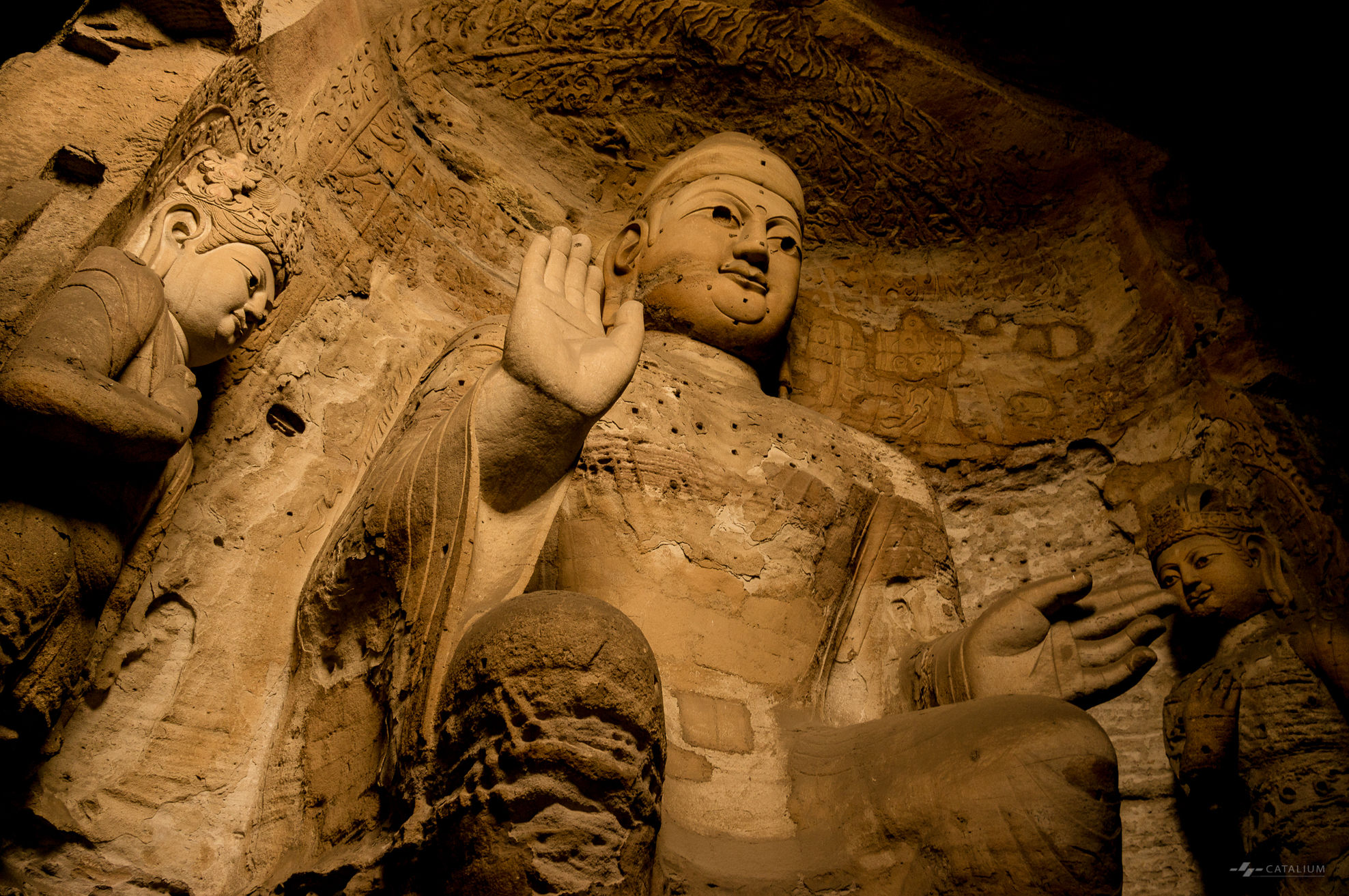
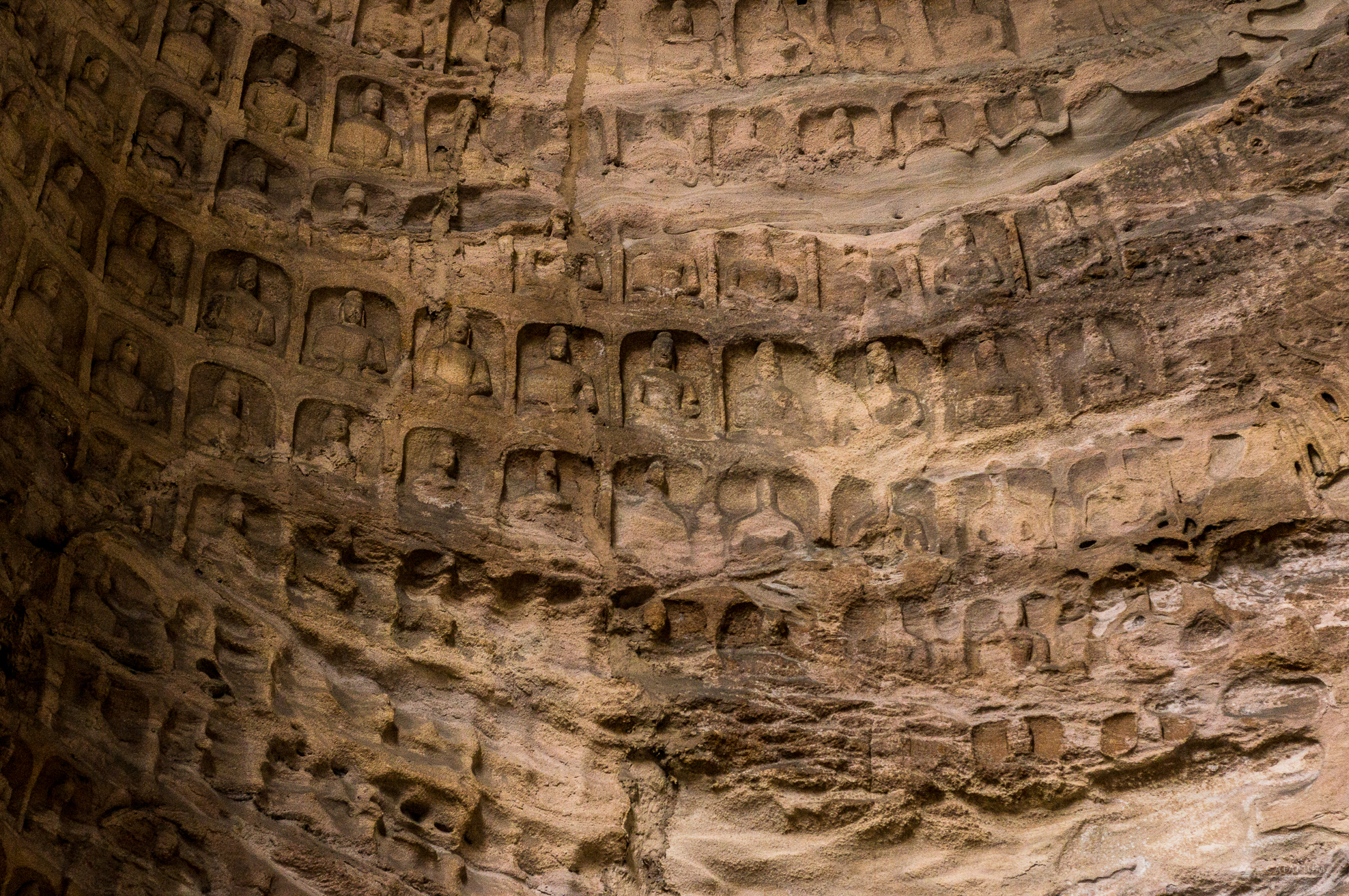
Before the Southern Song Dynasty (AD 1127-1279), the political and economic center of China was in the north. Provinces like Shaanxi, Henan, Shanxi, Shandong, and Hebei have relics remained an enormous amount. I chose to visit Datong of Shanxi Province, for its Yungang Grottoes, Huayan Temple, Terra Forest, and the Hanging Temple. Datong had been the capital for Northern Wei Dynasty (a minor dynasty existed during AD 386-534), to the west of the city, on the south facade of the Wuzhou Mountains, there carved the splendid Yungang Grottoes. The Grottoes have witnessed the passing of fifteen centuries, the penetration of water inside the mountain had eroded the sculptures and statues. In the Qing Dynasty ( AD 1644-1911) government tried to restore the grottoes in an unscientific way, this damaged the grottoes even more by leaving hundreds of holes. The second day I drove to Hunyuan County to visit the Hanging Temple. The temple was built initially in the 5th century, the current architecture was built during Ming & Qing Dynasties. When I saw the steep existence of the temple after driving through crosswind and black rain on the mountain road, I deeply admired the determination and the encouragement of the ancients. 27 beams and dozens of pillars made of tree trunks supported the whole temple. Walking on the narrow walkway, through the gaps between the planks, I saw the posts supporting the beams and the cliffs below.
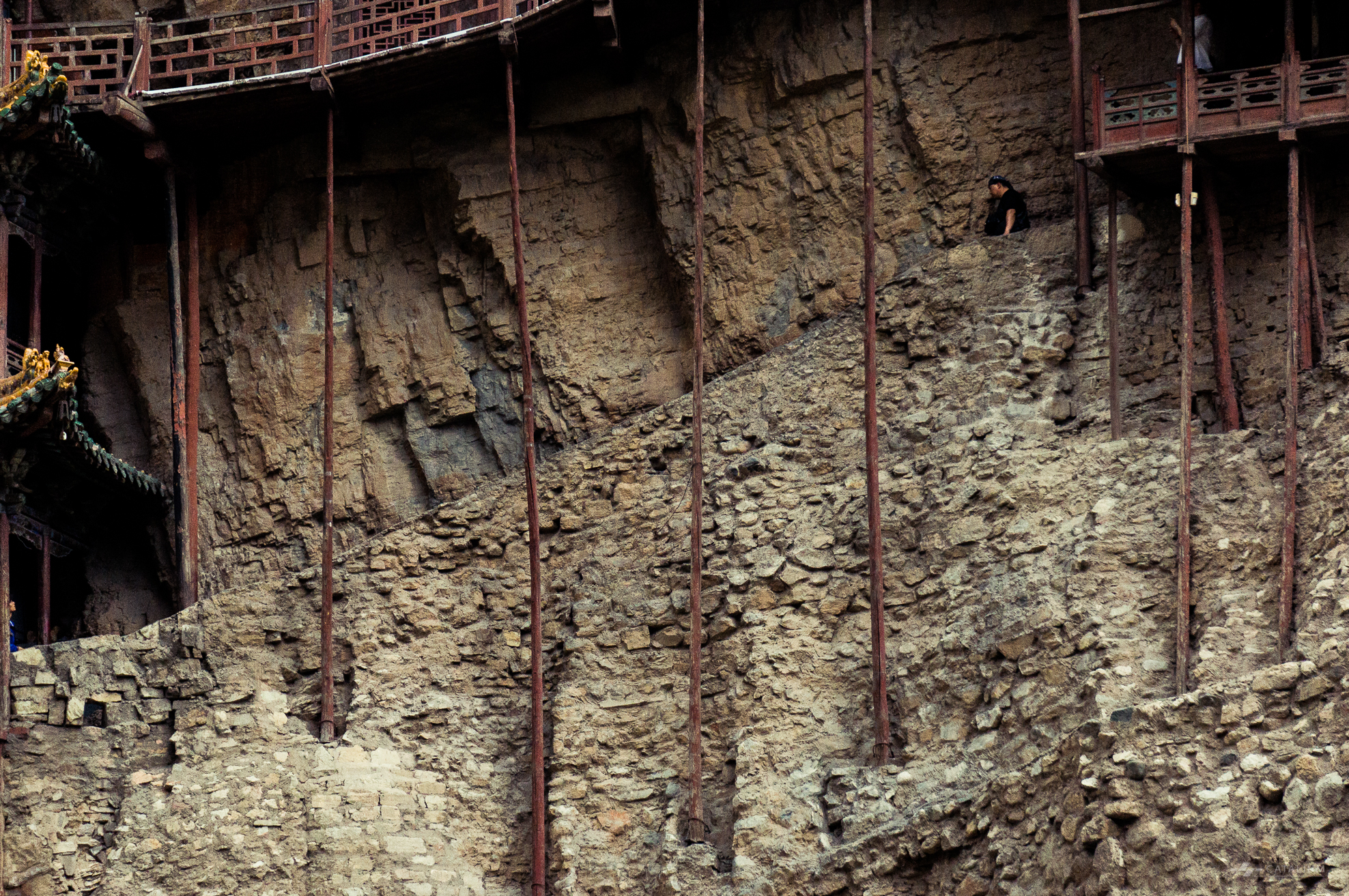
At the end of July, I went to Xi’an for four days. I visited the Bell Tower, Forest of Steles, Terra Cotta Warriors, the Great Wild Goose Tower, the History Museum of Shaanxi Province, and Qian Mausoleum of Tang Dynasty. Among all of the ancient Chinese dynasties, my favorites are Warring State Period, Han Dynasty, and Tang Dynasty — the literature, calligraphy, the sculpture of those periods reflect an atmosphere of open and inclusive, confident and outgoing. Shaanxi Province, as the center stage of that time, has kept a lot of evidence. The Forest of Steles and the History Museum left the most profound impression on me. The reason why I list the Forest of Steles on my schedule would start with the Six Steeds of Zhao Mausoleum. I learned the history of the Six Steeds by watching a documentary film, it was a legendary story — the brothers of Yan Lide and Yan Liben (both were prestigious artists in China history) were ordered by Li Shih-min, the Emperor Taizong of Tang, to create the relieves for the six steeds which served Li Shih-min in critical battles, those relieves were established in front of the tomb of Li Shih-min (the Zhao Mausoleum), and since stayed there for more than 1,300 years. During the chaotic Republic of China period, some of the steed relieves were broken into pieces being smuggled, and two of the steeds were taken to the US (kept in the University of Pennsylvania Museum of Archaeology and Anthropology nowadays), it’s a story of illegal trades and Yuan Shih-kai’s son was also involved in this case. When I knew the remaining four of the steeds were kept at the Museum of Steles Forest, I decided to visit it. The Forest Steles was a treasure-house, Piety Stele On the Stone Base, Jingyun Bell, the Stele for the Memory of the Christian’s Propagation in China, the Balkh Stone Horse were all nation-level cultural treasures, while famous steles and carvings were countless. The History Museum of Shaanxi Province was even cooler, I had seen several relics appeared on the textbooks. The last day when I was in Shaanxi, I drove alone from Xi’an to Qian Mausoleum of the Tang Dynasty — the Mausoleum of Empress Wu Zetian, Wu Zetian was the only top ruler in the whole Chinese history. En route to Qian Mausoleum, when I saw the traffic signs along the G70 highway, I felt I was not driving on the highway, but traveling through the space tunnel — many of the signs along the road indicated various famous ancient cities and mausoleums. When I arrived at the exit for Qian Mausoleum, I turned my head to the left, it was in the noon, there was light haze in the air, I saw the contour of a gigantic mausoleum mountain, on the other side of the site, there were two hills with towers built atop, it was like a scene in hallucination.
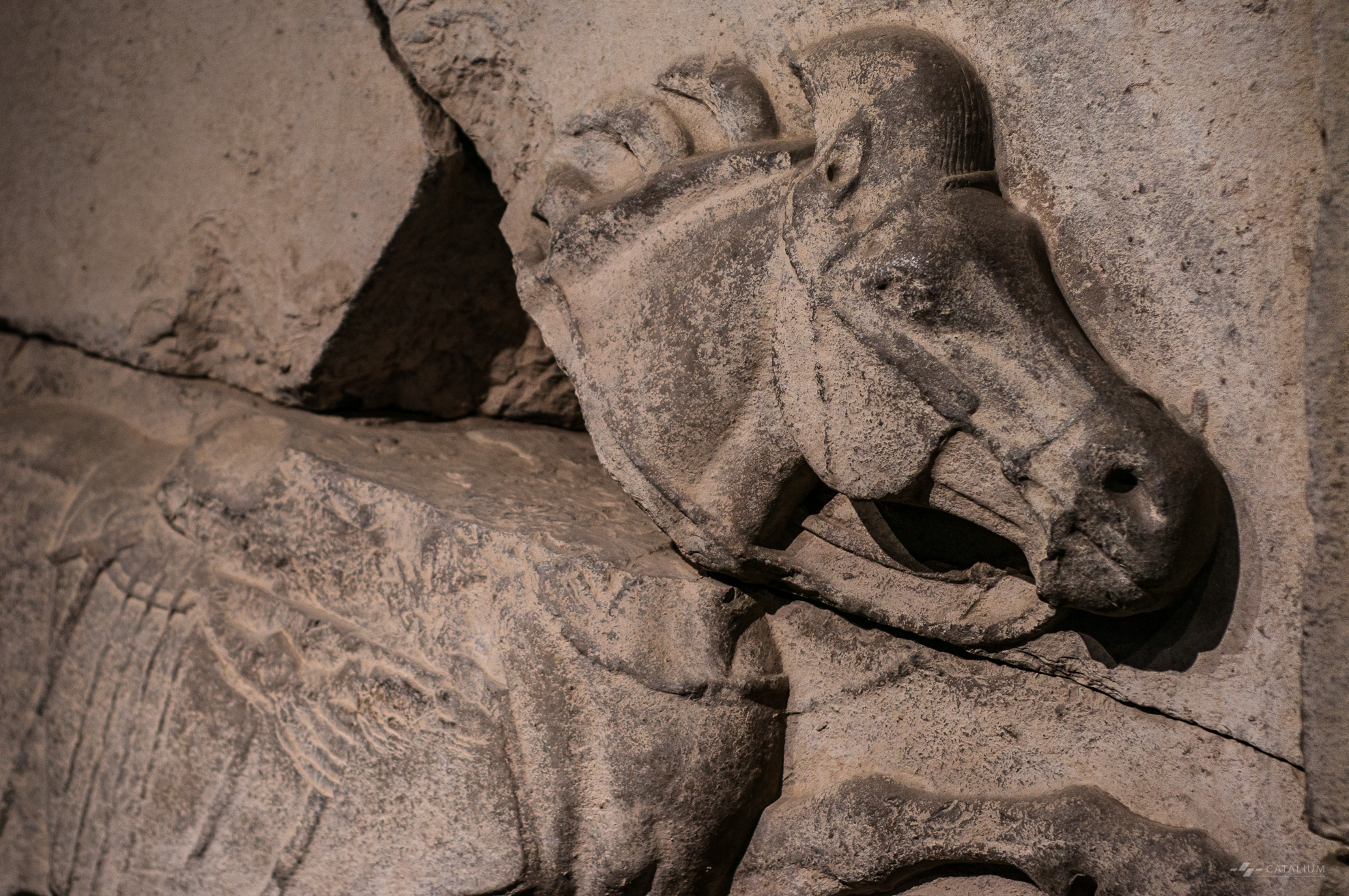
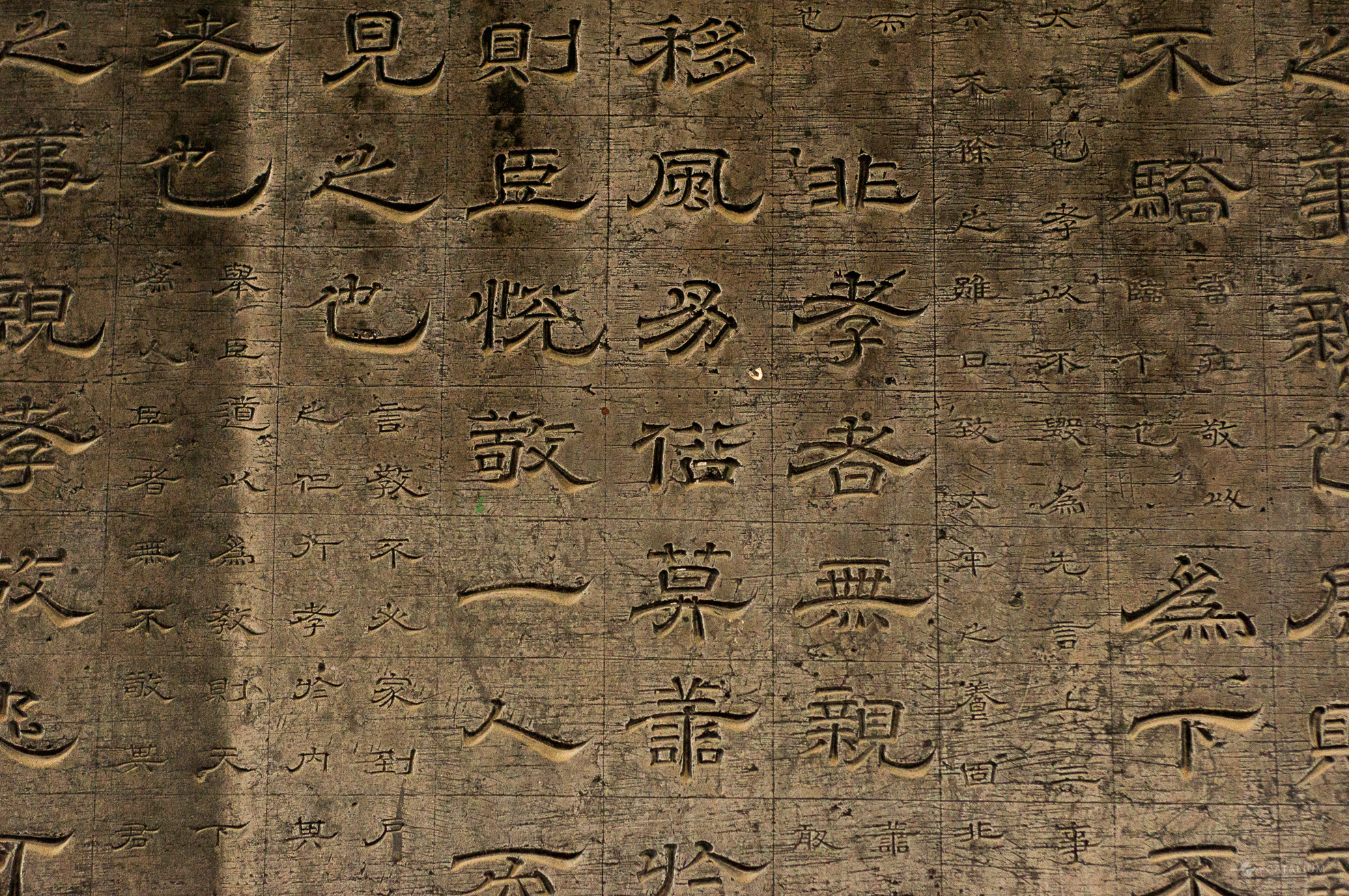
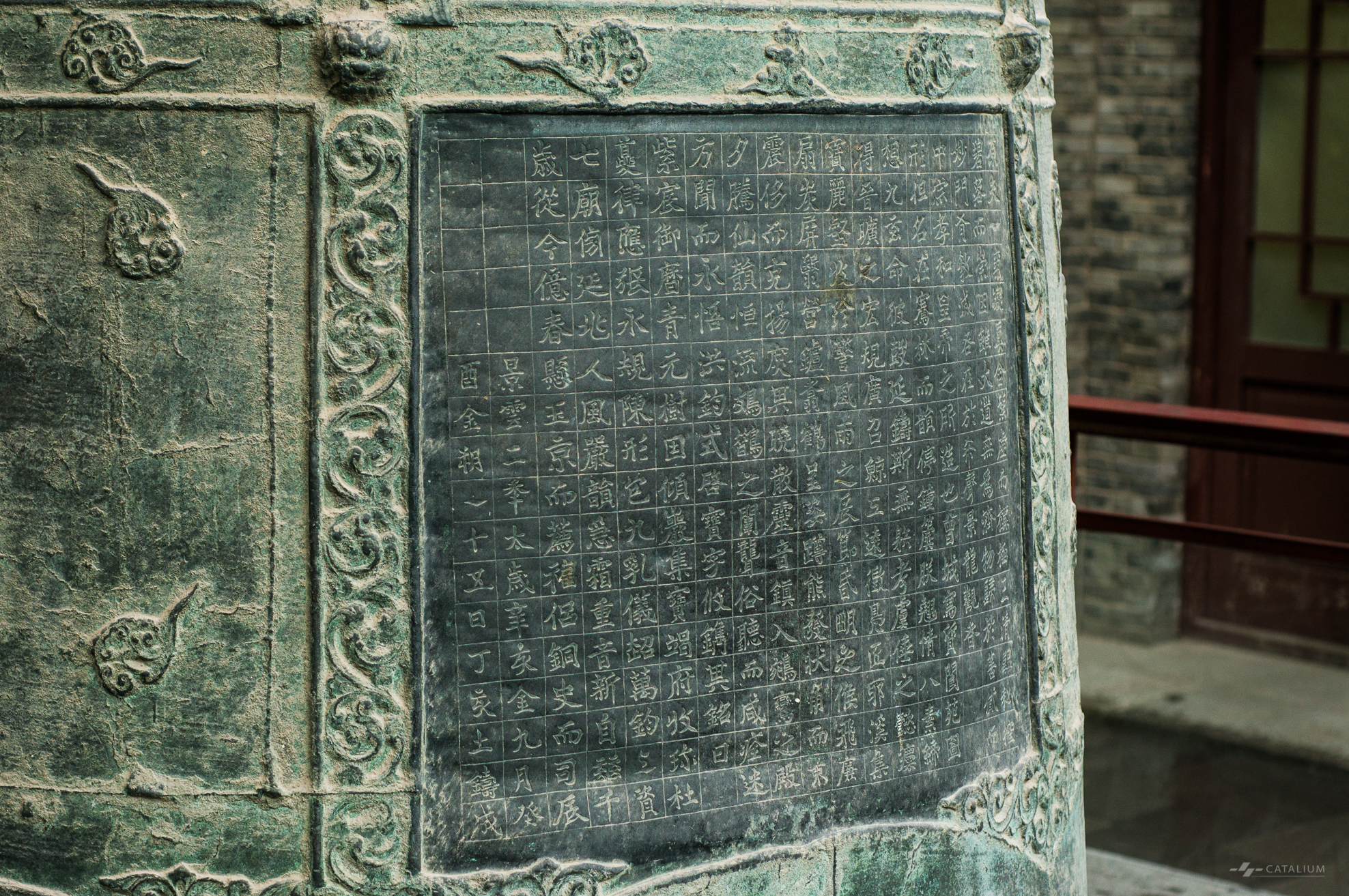
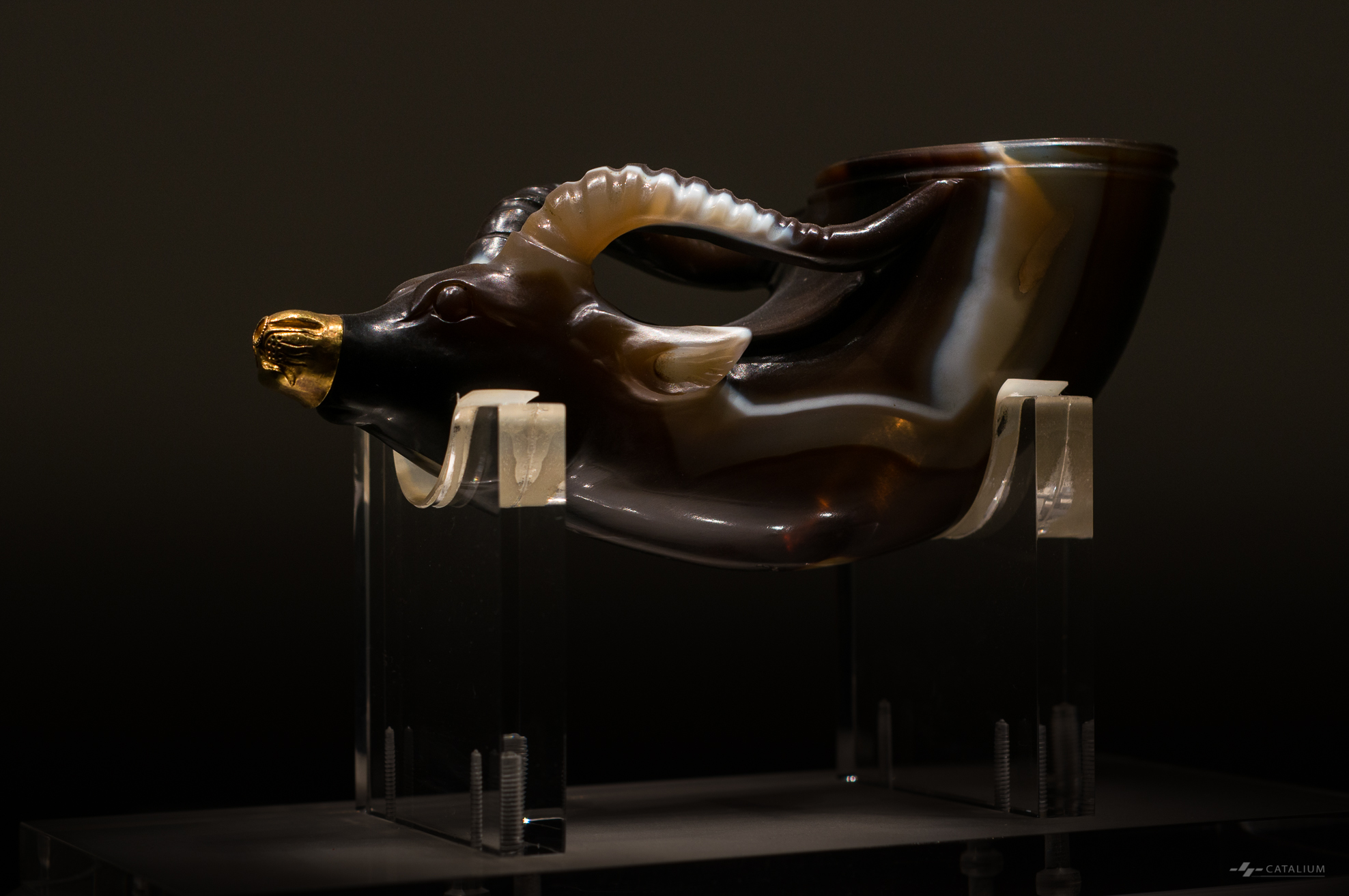
On the flight back from Xi’an, I was thinking what made an once open and confident nation to become closed and fell behind?
One week before leaving Beijing, I went to the Mutianyu Section of the Great Wall, stay on it until the night fell, when I was the only person in the whole Mutianyu Section. Standing on the Great Wall overlooking the ancient walls covered with weeds and trees in distant ridges, which were built in the 16th century, deeply impressed by the will of the ancient ancestors.
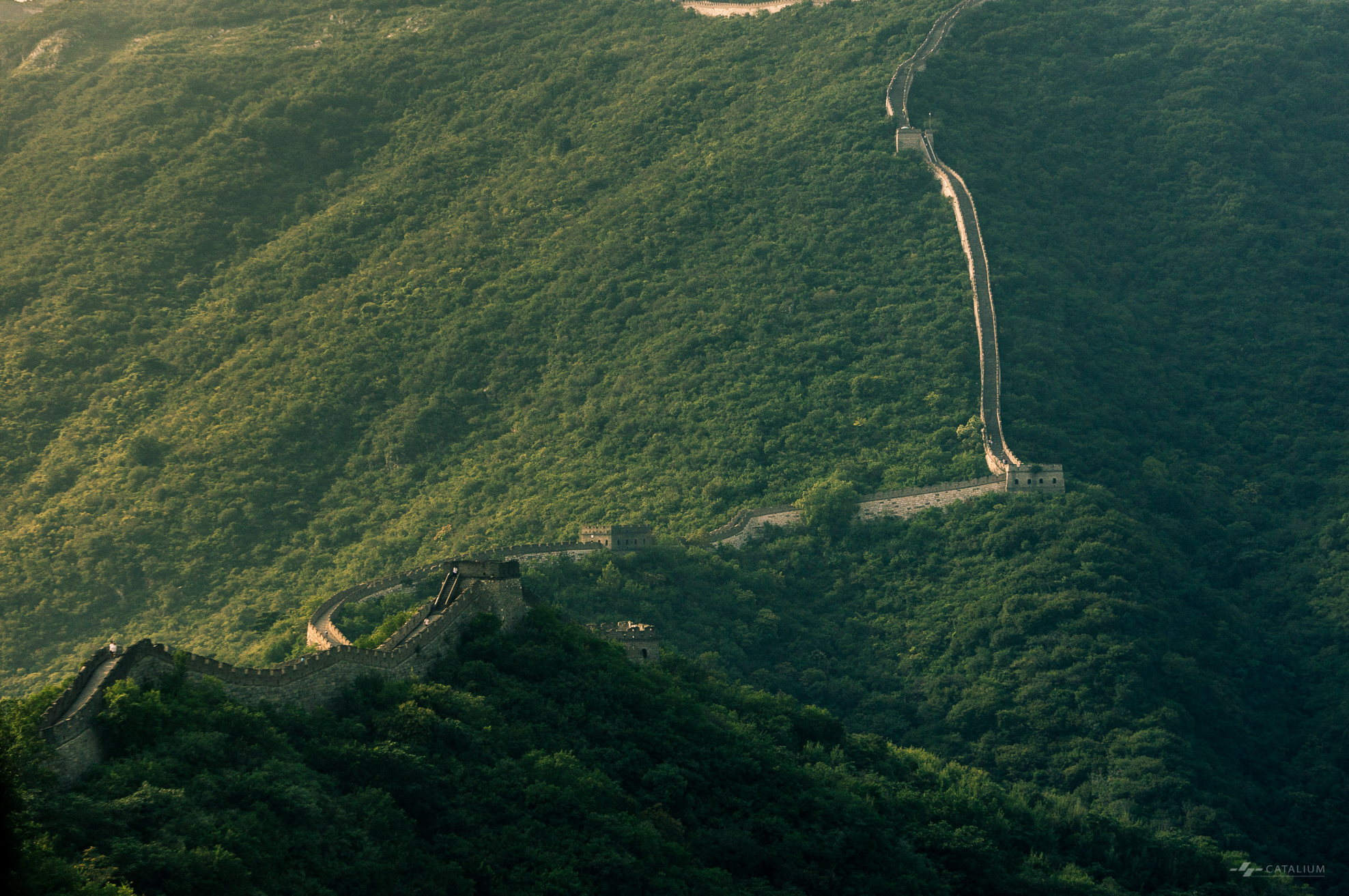
Study in the United States
On September 1st, I left my hometown on an ANA flight from Wuhan to Seattle (via Tokyo). When the North America continent and pinnacles of the Cascade Range appeared in my sight, I realized the new experience was really about to begin.
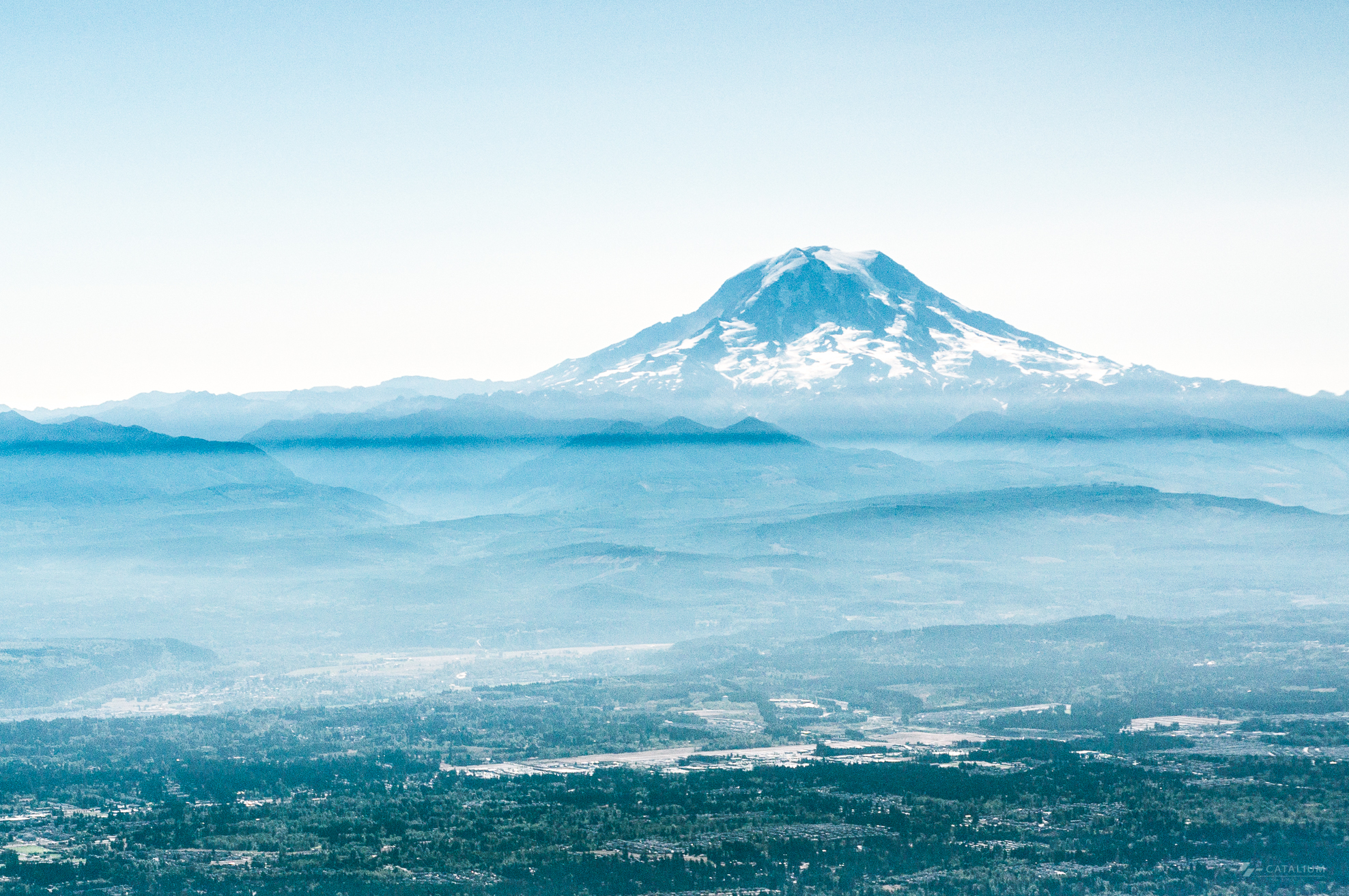
Global Innovation Exchange as UW’s latest institution by then, had not yet opened when I came. On September 14th, a grand opening ceremony was held. The presidents of the University of Washington and Tsinghua University, two CEOs of Microsoft — former CEO Steve Ballmer and the current CEO Satya Nadella, and Microsoft president Brad Smith, together with three governors of the Washington State, the Consular in the General-Consulate of China in San Francisco, and other celebrities in the Greater Seattle Area came to the event. And the first building of GIX was named as Steve Ballmer Building at the scene. At that noon, I attended the Innovation Summit hosted by UW, listened to sharings from predecessors like Harry Shum.
As more I knew, I found GIX had borne more visions than I had expected. The tech industry in the Seattle region needs another academic institution out of the current UW framework, this institution is different from most grad schools in the world today, it grows by the UW’s resources and the bond with other top universities in the world. It plans to develop into a 3,000-student scale grad school on the east coast of the Lake Washington in 10 years. And the enterprise consortium would provide fundings, advice, and research projects. On an opening day, it announced several other universities joined in the GIX system, which included EPFL, UBC, KAIST, etc.; and ARM, Boeing HorizonX, Baidu and Hainan Airlines were announced to join the consortium.
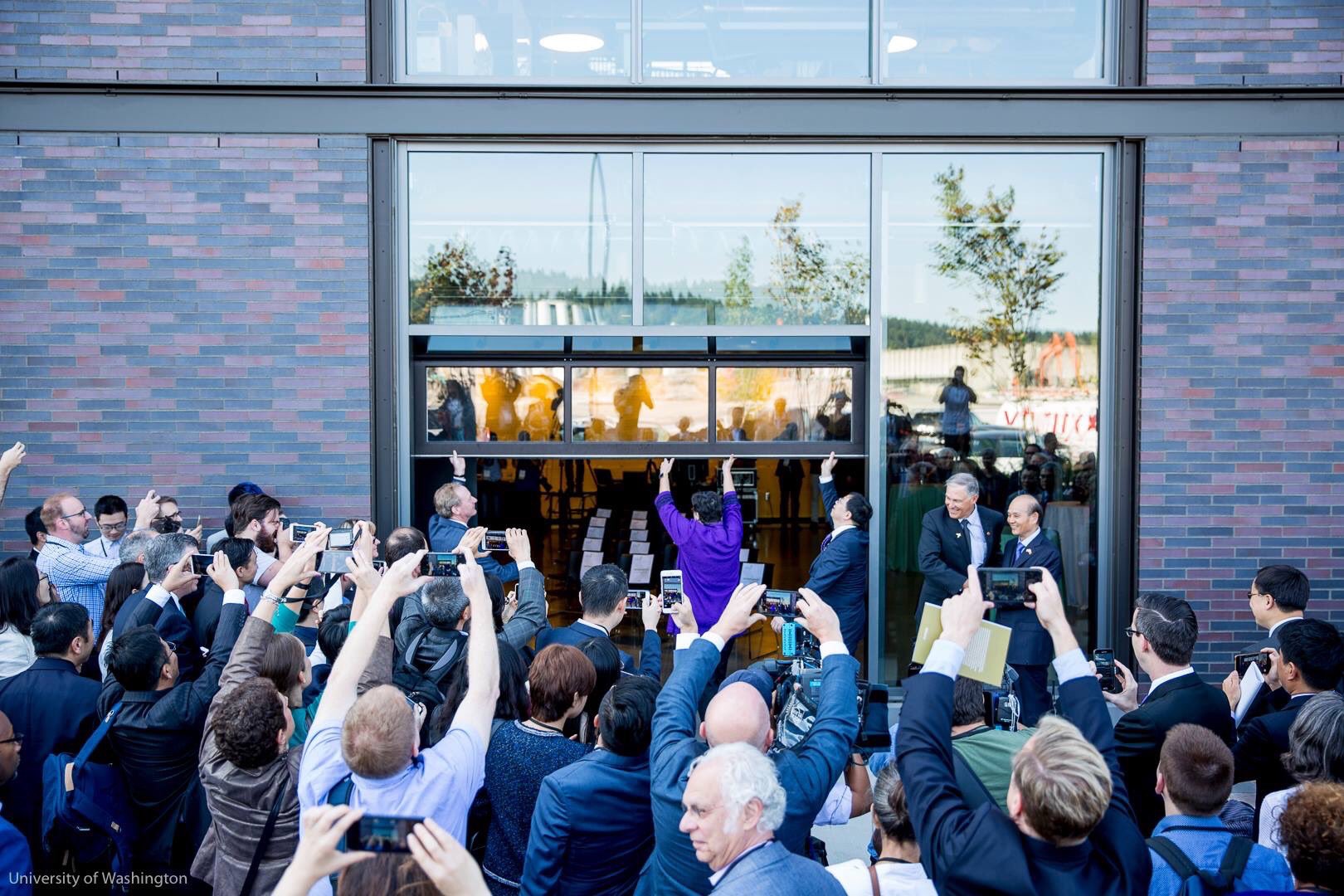
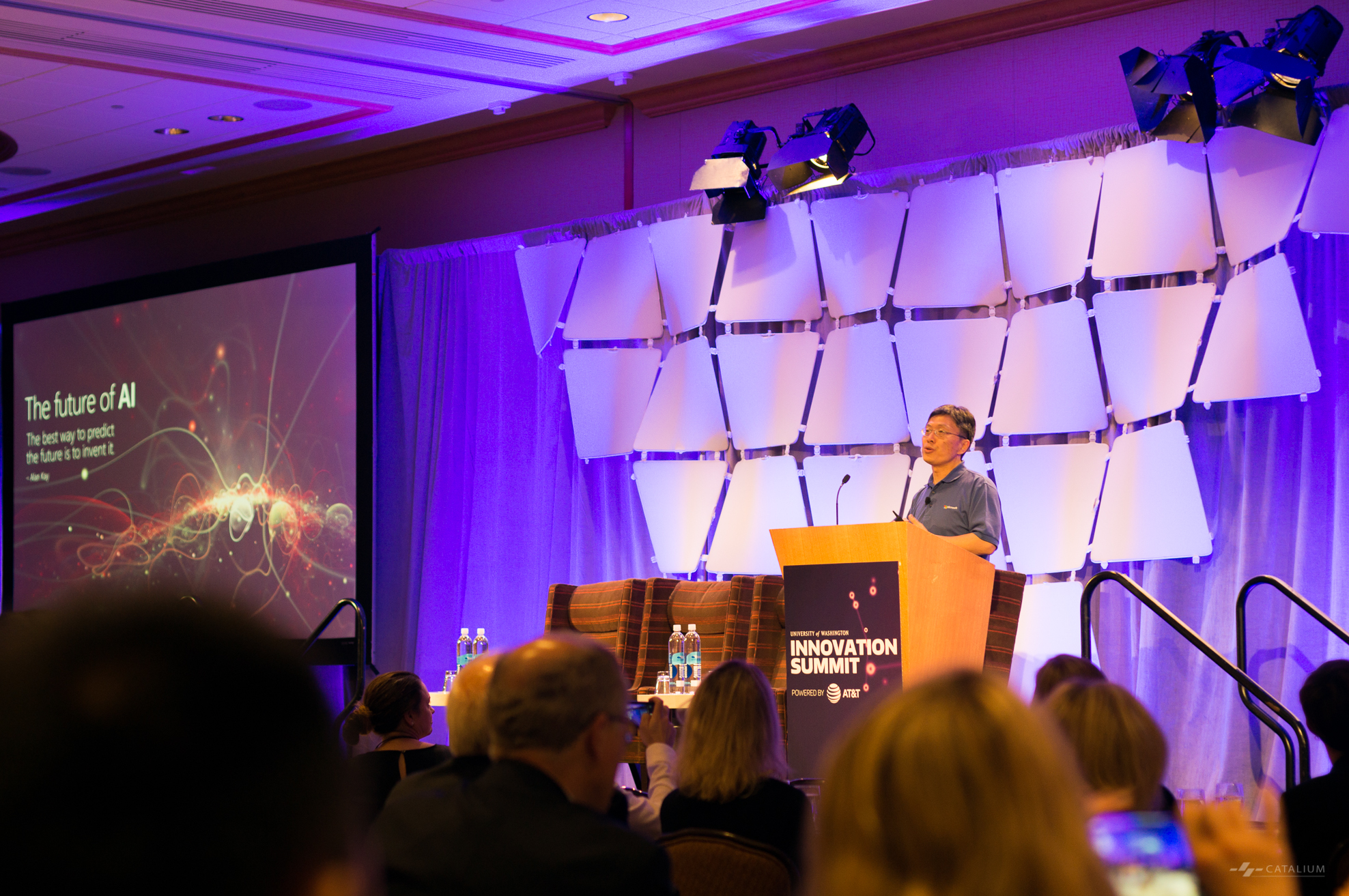
The curriculum of the MSTI program consists of three sectors: technology, business, and design, supported by UW CSE School, Foster business school, HCDE department, and the law school. The first quarter covered Design Thinking, Essentials of Entrepreneurship, and Interface Development; the second quarter will cover circuits, sensors, data management, machine learning, history of technology and hardware/software lab; the latter two quarters will include prototyping, finance & accounting, user research and evaluation, cooperate and IP laws, building effective teams, management of software/hardware development, visual/industrial/interaction design studios; in the final quarter, we will spend three months to work on a launch project, the representatives of our sponsoring consortium will evaluate these projects.
MSTI is an intensive program, in the second week of the first quarter, we had our first overnight experience of homework. I kept reading tech document/ business cases or coding, drafting reports, doing research for the whole quarter.
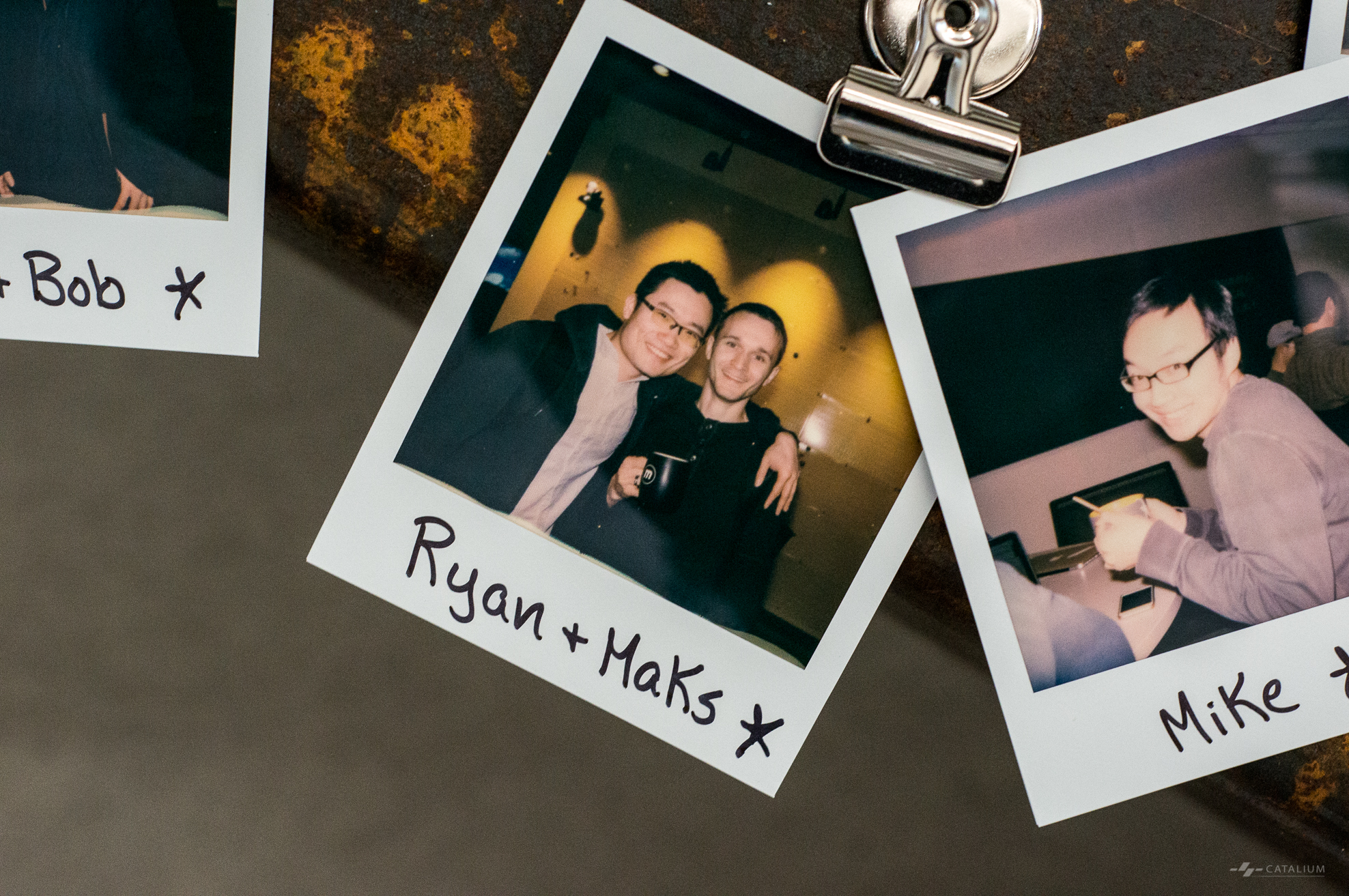
Outside of the school, GIX built a mentorship platform for us. My mentor for the first quarter was a director of the PwC Seattle, he had rich experience in the semiconductor and product innovation. He mentored me more than product management, which also included the soft skills which would help me better adapt to the culture here in the US. He gave me a feeling of a big brother.
Aside from study on professions, my most significant gain was to understand the importance of communication. In the Design Thinking Studio class, I lost mutual trust with a fellow student because of communication problems, this haunted our team for most of the quarter. It was a dispute between us on the contents of my summary website that made us realized what originated all of the problems. I had never recognized the importance of communication at that moment.
Vision for 2018
In the new year, I wish to figure out a study method with higher efficiency, and master the techniques to extract insights with Machine Learning applied to data generated by sensors; in the meantime, I wish to enhance my ability in HW/SW development management and team-building.
In December of 2018, I will graduate from the UW. I wish to join a leading technology company, to devote myself to the R&D work for the next-gen products. Especially hope to make a valuable contribution to the application and commercialization of the Machine Learning technology, and this is also my expectation for the next 5 years.
A couple of days ago, I hiked along the Heather Lake Trail. In the night when I came back to the parking lot, I saw stars more than I had ever seen. The unseen stars had existed over there for millions of years, the clear sky enabled me to see them. I realized that only by going to a new place, you can see the unseens.


This work is licensed under a Creative Commons Attribution-NonCommercial-ShareAlike 4.0 International License.
Which mental and physical abilities do you want to master in 2018?
Mental: courseworks at GIX; physical: sailboat rigging/freestyle swimming(?)